This in-depth review was not sponsored by Magnum or any other company, but I would like to thank Caps Electric Bike Shop for allowing me to use a test bike from their shop. My goal is to be transparent and unbiased with you, this video and writeup are not meant to be an endorsement of Magnum products. I welcome your corrections, additions, and feedback in the comments below and the Magnum electric bike forums.
Observations:
- Magnum has developed and extensive network of dealers that carry their products in the United States and Canada, but also sells direct to consumer 70%+ assembled. They have been selling electric bikes since 2010 with steady hardware improvements and consistent support.
- The Nomad is commuter ready with fenders, integrated lights, and a rear rack. The mid-step frame makes it fairly easy to mount and stabilize, but still sturdy and stiff enough to handle a fully loaded rear rack or a bit of off-road use. I’d consider it more of an SUV than a mountain bike, but much of the hardware is capable and tough.
Pros:
- The Magnum Nomad seems more intentional about being a comfort fat bike than many others that also have a suspension fork… and that’s a good thing in my opinion. Notice the riser handlebar that isn’t super long, the adjustable angle stem, the wider saddle, and ergonomic grips. The tires offer enough traction to manage on packed dirt trails, but the tread is tight and they are fairly smooth which reduces friction and noise. I consider it more of an SUV than a true off-road ebike.
- Excellent hydraulic disc brakes here. The three finger levers felt sturdy and were easy to actuate. They offer some reach adjustment for different sized hands, and they both have motor inhibitors and a brake light activation switch. Interestingly, the brake light blinks here vs. going bright like most competing products. I think it’s a decent decision… especially if the lights are already switched on. Finally, the larger 180mm disc brake rotors front and rear provide good stopping power and cooling properties.
- Despite being a mid-step design, which is more approachable than high-step, the frame felt very sturdy and stiff to me. This is very important, given the heavier tires, fenders, and rear rack (which is capable of 25kg 55lbs load). I also noticed the thicker 12 gauge spokes in the rear wheel, and tubular design of the downtube.
- Above average suspension fork provides a compression clicker that can fully lock out (for reduced bobbing if you’re on a flat smooth surface), as well as preload adjust (to pre-load the spring for your body weight). A big highlight for me is the black stanchions! Most competing products are silver, and wouldn’t match the all-black hardware of this bike. Great job with the spokes, hubs, rims, seat post, stem, handlebar etc. Magnum!
- Since the bike may be shipped direct, I appreciate that it comes with a steel derailleur guard to protect the sensitive parts of the drivetrain. Note also the chainring guard and internally routed cables that are less prone to damage and snags.
- The frame is fairly adjustable to accommodate different body types. The seat can be lowered without colliding with the rear rack, the stem can be angled +30 to -30 degrees, and the handlebar can be swiveled back or forward to reduce or extend reach.
- The 48 volt battery pack offers above average capacity and power, and it combines with the fat bike specific planetary geared hub motor to produce a lot of strength for starting, climbing and accelerating.
- I love that Magnum chose a sealed 12 magnet cadence sensor, because this part is proven and reliable. Pedal assist performed as expected, and the variable speed twist throttle overrides PAS with full power no matter which level you’ve chose. This means you can be in PAS level 1, but use the throttle to add power and speed in an instant.
- By separating the controller box from the battery pack, Magnum reduced heat exchange and lowered the price for replacement and upgrade batteries. I’m impressed that it’s only ~$100 to go from a 840Wh to 921.6Wh battery pack at time of purchase! This will extend range and lifespan of the battery, and probably only adds one pound of extra weight.
- Magnum chose a battery charger that is rated at 2.8 amps vs. just 2 amps for similarly priced competing bikes. This 40% increase will shorten recharge times and is very useful given the size of the battery packs on offer.
- The bike felt very comfortable and stable to me due to the wide stable fat tires and 80+mm suspension fork travel. Although it’s heavy, I think this could be a great choice for riders who want to feel secure and be able to handle a variety of terrain around town. I was able to coast no-handed very comfortably without speed wobble.
- The cockpit is fairly intuitive, even for new riders. The gear selector is large and has a readout to explain what gear you’ve chosen. The display is also above-average size and very easy to understand. With the four button control pad, it should be easy for most folks to use. Just remember to hold the up arrow to activate lights and the down arrow to activate walk mode if needed.
- I like that Magnum chose name brand Wellgo platform pedals, because they feel stiff and grippy. Some companies choose narrower or flexier cage or plastic pedals. I like that the saddle has a handle built into the back for easier positioning of the bike. I like that the locking core and USB port are high up on the battery… but do wish the charge port was also high vs. low near the left crank arm.
- Excellent integrated lights here. They’re bright, run off the main battery pack, and point where you steer. The headlight may need to be repositioned if you get the optional front rack, and may no longer point where you steer.
- The wide plastic fenders did not rattle, will not rust if scratched (as steel fenders do), and provided good coverage during my wet riding tests. I think you could remove them pretty easily to save some weight if you wished.
- The rear rack is very nice. It’s positioned far enough back so as not to block the saddle in its lowest position. It is fairly long, so you can easily fit a trunk bag or child seat like the Yepp! Nexxt Maxi side clamp version, and it has a triple bungee as well as side pannier hangers that use standard gauge tubing for maximum compatibility.
- I believe that the US version of this ebike can go ~28MPH and is a Class 3 speed pedelec. This is unique in the world of fat ebikes, but you can probably lower the top speed if you wish, and you could remove the twist throttle to achieve Class 1 for use on some mountain biking trails.
- There are many adjustments that can be made to the LCD display by entering the settings menu. To do this, you must hold the up and down buttons within three seconds of powering on the display. It appears that you can show the battery percentage in addition to a five bar readout, change the units, and also adjust that top speed.
- I love how the display dims a bit whenever you activate the lights. This makes it less distracting, and helps to preserve your night vision.
- This bike has a 30.4mm seat post, so if you were looking to add more comfort to the ride setup, you have the option to purchase an aftermarket suspension seat post like a Kinekt or SR SunTour NCX to create a full-suspension feel. I’m not sure it’s necessary given the squishy fat tires, but it would still be compatible.
Cons:
- The adjustable angle stem is very nice for improved fit and body position, but it’s probably less sturdy than a fixed stem. Keep this in mind if you ride off-road frequently or put a lot of strain on the handlebar, because it could start to come loose… just tighten it and keep an eye out so the ridges don’t strip.
- Weighing in at 76.4lbs, the bike is 2lbs heavier than advertised on the official Magnum website (with the stock 17.5Ah battery pack). Fat tire electric bikes usually tend to weigh a lot to begin with, but the wide fenders, lights, high powerful motor, extended rear rack, adjustable stem, double leg kickstand, and double tube mid-step frame all add weight. Perhaps they could have shaved some weight with punched out rims? Consider removing the battery pack before lifting.
- The alloy double leg kickstand is sturdy, but it hangs down lower than most side-mounted stands. This could result in obstacle strikes if you’re riding off road and the right leg is so close to the chain that it frequently touches and makes noise. The almost-new demo bike that I reviewed had already had paint chipped off from previous test riders.
- I was surprised that they didn’t add a clear sticker slap guard to the right chain stay to keep the chain from chipping the paint (as we saw on the kickstand). You could always make your own protectors with clear box tape. The frame and kickstand are aluminum alloy, so at least they won’t rust. Consider purchasing a bell to signal other riders and cars as well, I did not see one included here.
- Basic 1-1/8″ straight steer tube limits suspension fork upgrades (most of which require a tapered steer tube), and the 9mm quick release skewer isn’t as sturdy as a 15mm thru-axle I’d expect from a true mountain bike with fat tires. Similar situation with the square tapered bottom bracket vs. ISIS splined and the limited 14 to 28 tooth freewheel vs. an 11 to 32+ tooth cassette.
- Entry level Shimano thumb shifter requires a bit of reaching to actuate, but is very intuitive and probably easier to interact with when wearing gloves. Basic Shimano Altus derailleur isn’t as tight or light as higher level alternatives, but they tend to be very reliable.
- I appreciate the USB port on the battery pack, but it would be nice to have one on the display panel as well. As it stands, you’d have to use a right angle USB adapter to keep a USB plug from sticking out and potentially getting snagged while pedaling, and you’d have to run a wire up to the handlebars which could look ugly and be more prone to disconnecting or damage.
- The controller is external to the battery pack and mounted independently behind the seat tube. This makes it and the battery packs less expensive and spreads out heat, but it doesn’t look quite as nice. The wires at the front of the bike are also a bit busy, due in part to the addition of brake lever motor inhibitors, a remote button pad, the display, and the twist throttle. At least they are fairly well managed with Velcro strips and then internally routed through the downtube :)
- The headlight is very bright, with two LEDs, and the housing appears to be tough aluminum alloy! However, it does not have side windows. These ebikes don’t have reflective tires or reflective accents on the frame… but the white branding could help. Consider the white colored frame to maximize your visual footprint.
- The tires and lights were unbranded, so it could be difficult to find matching aftermarket replacement parts if Magnum was unreachable. I wish that the tires displayed more information about recommended pressure vs. just a maximum of 20PSI. Most similar tires suggest 5PSI to 20PSI which provides a sense of confidence when lowering for sand, snow, or soft terrain rides.
- I’m glad that the top tube has bottle cage bosses, for those who really want to use them for an accessory, but the positioning may limit stand over room. The shorter handlebar doesn’t have a lot of space for adding a cup holder, but is nice for riding between tight spaces, cars, or moving the bike inside. These are minor considerations, and the optional front basket and included front rack go a long way to address cargo.
- The battery charging port is very low near the left crank arm, so you have to bend down to reach it (watch your head when coming up, or you might hit the handlebar). It’s nice that you can cycle the pedals backwards when the kickstand is deployed (for drivetrain maintenance), but this means you could also snag the charging cable and possibly break the interface, so be careful.
- The motor is very capable and powerful, it performed well during my climb tests and off-road. I did not see a torque arm at the rear axle, just a torque washer. Perhaps this is fine for most situations, but given the 750 watt to 1,000 watt output, I’d keep an eye on the rear axle so it doesn’t get loose and chew the aluminum alloy dropouts.
- Very minor complaint, the support arms for the front fender attach to the suspension fork lowers with plastic cuffs vs. direct mount bolts to threaded eyelets. They could slide more easily or crack over time.

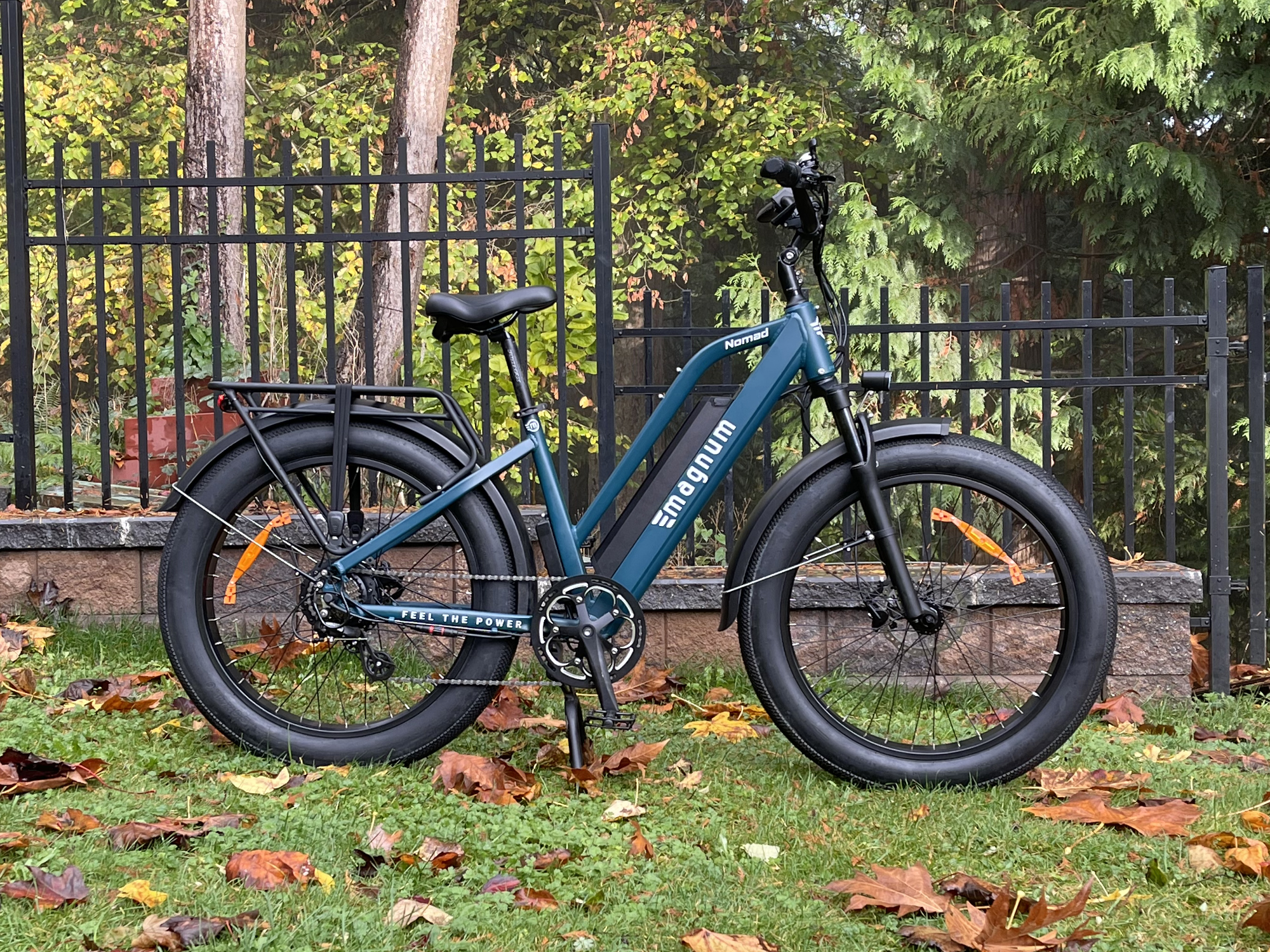
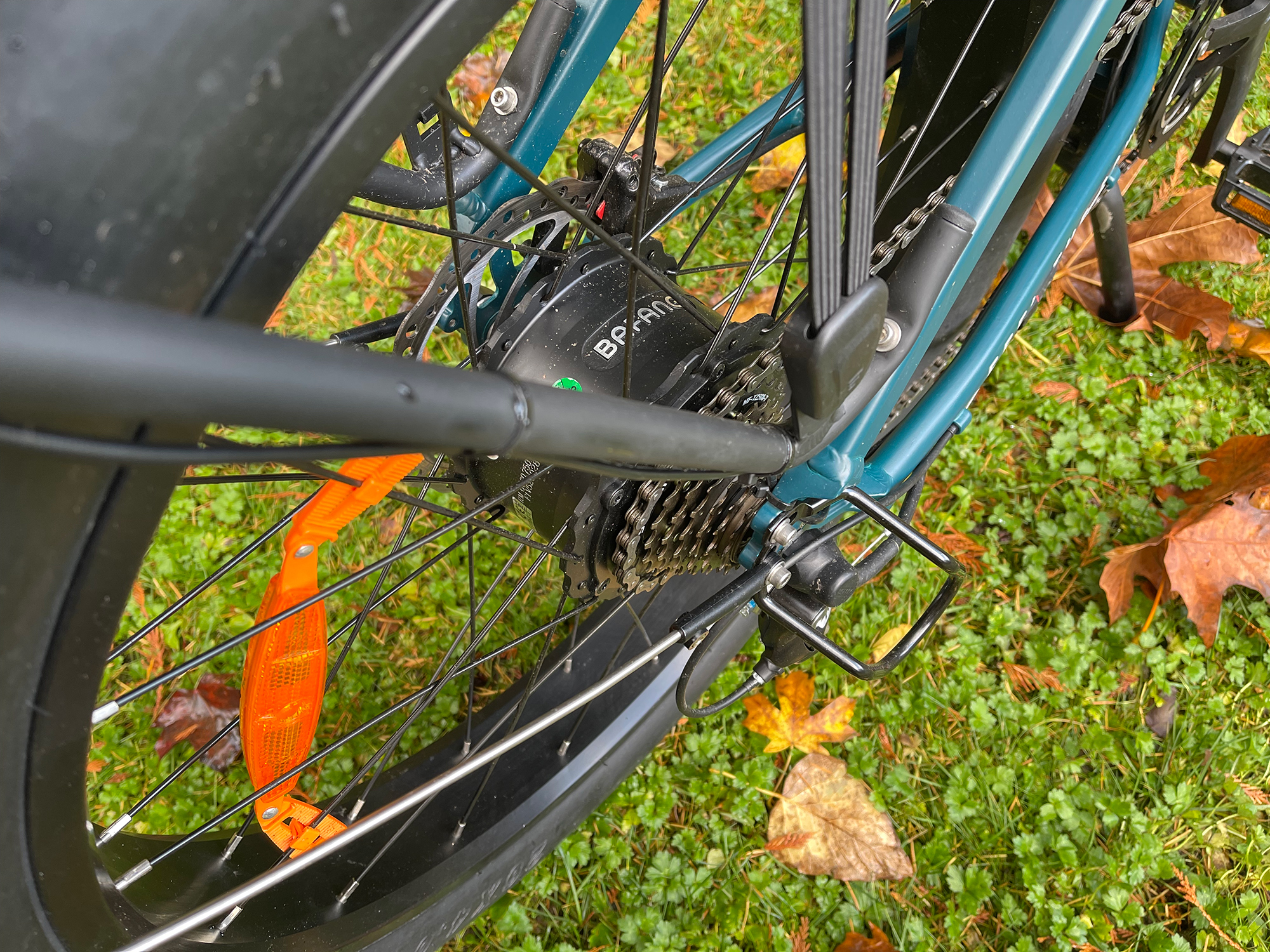

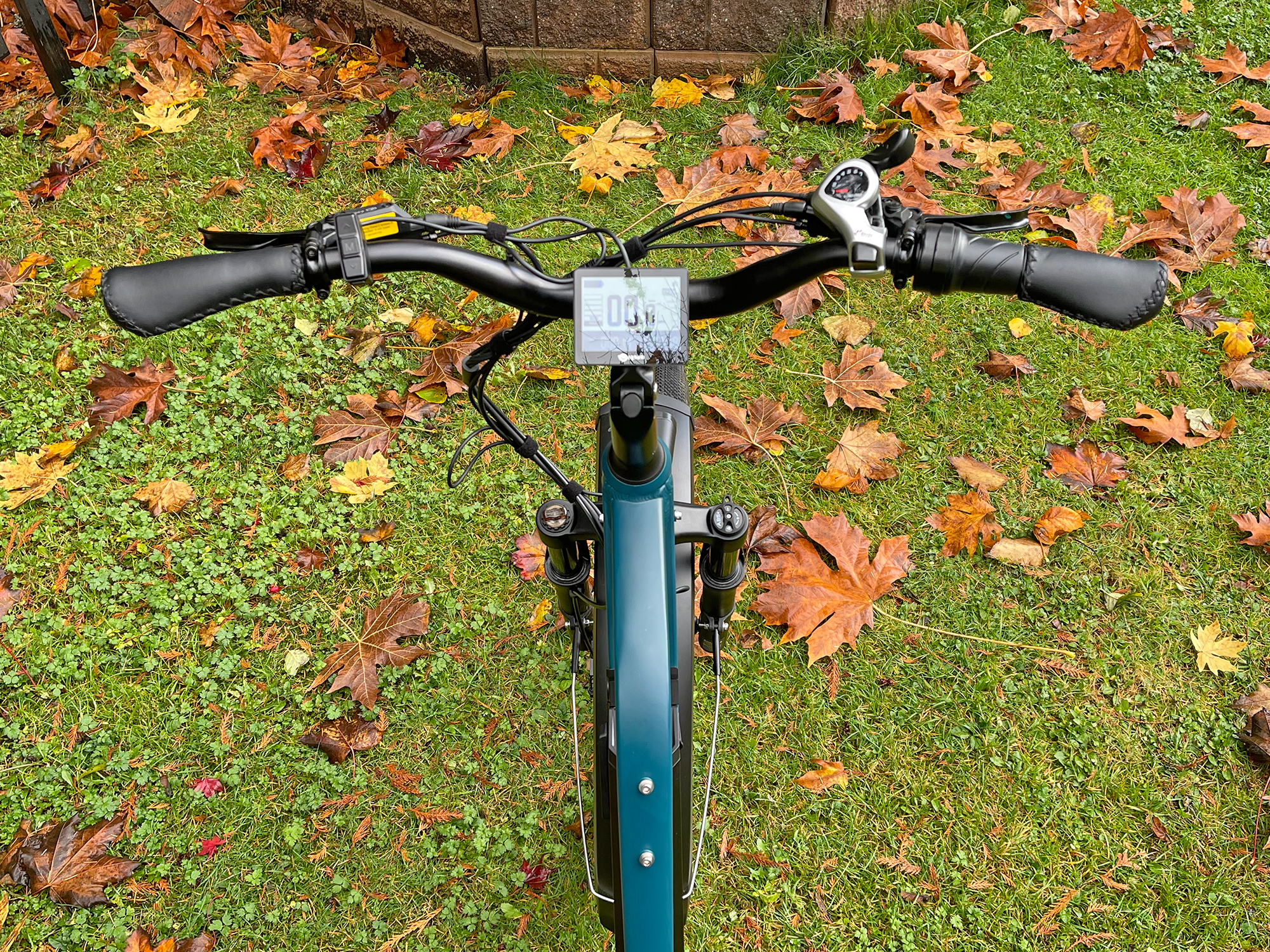
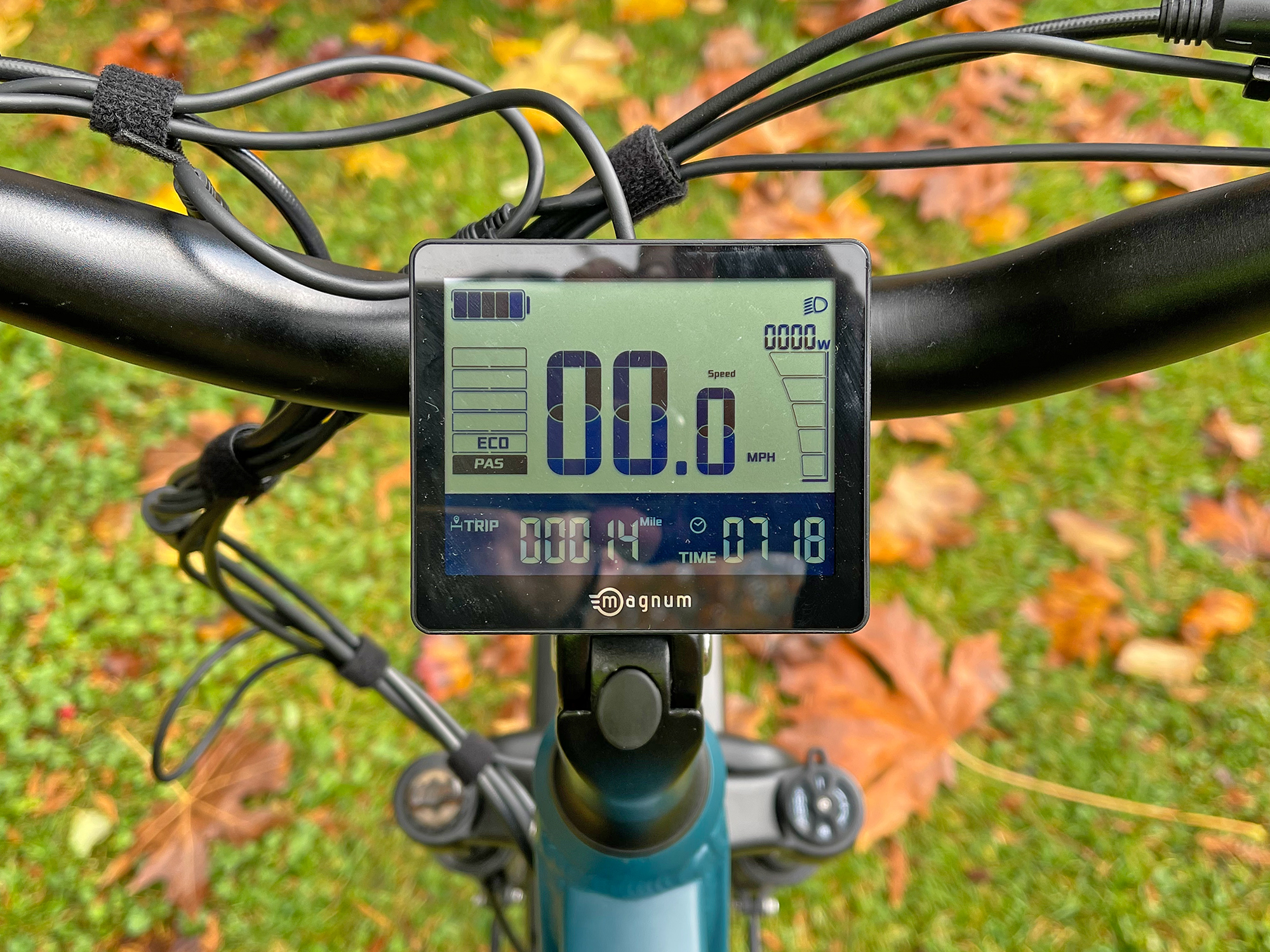
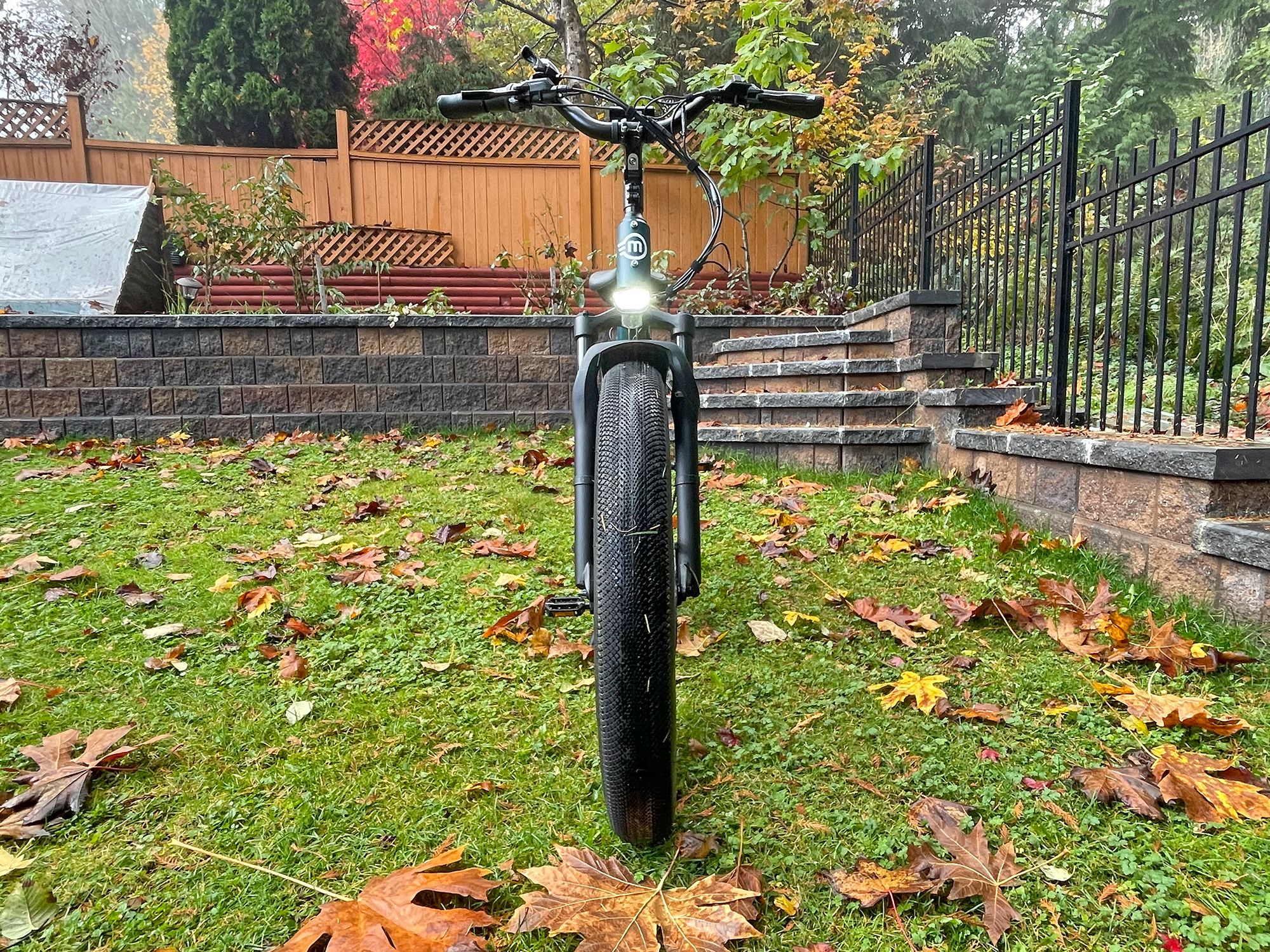
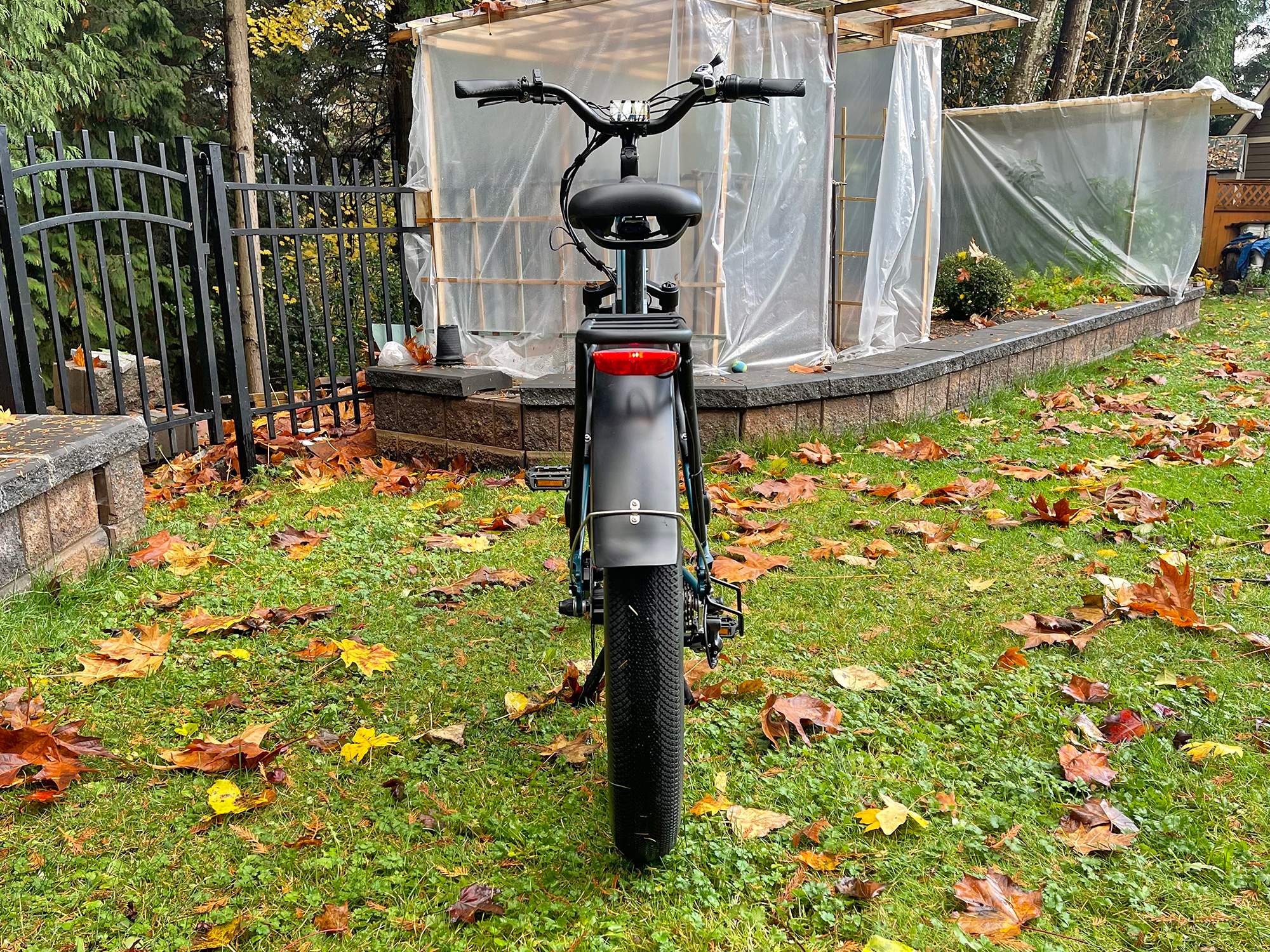
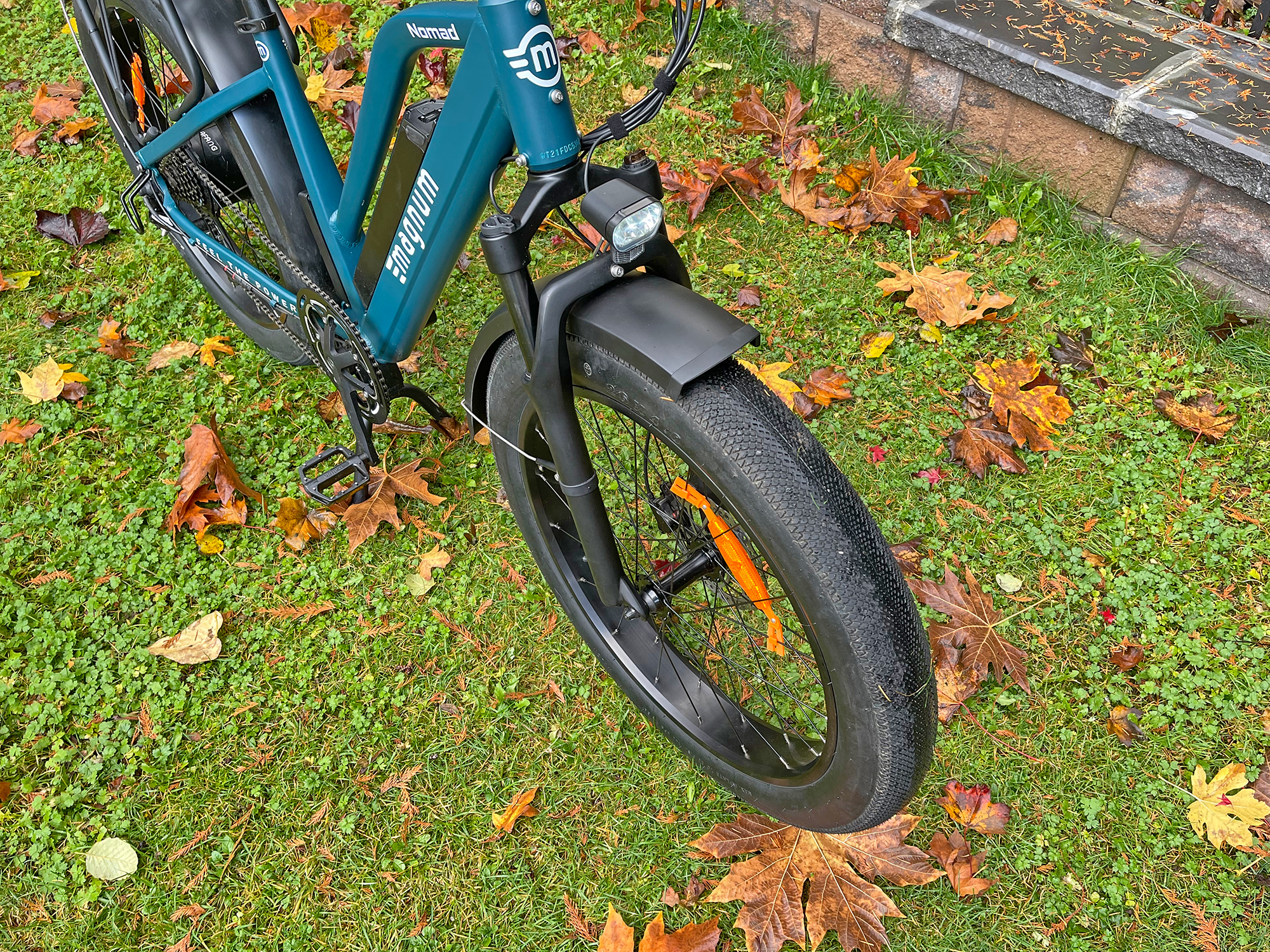
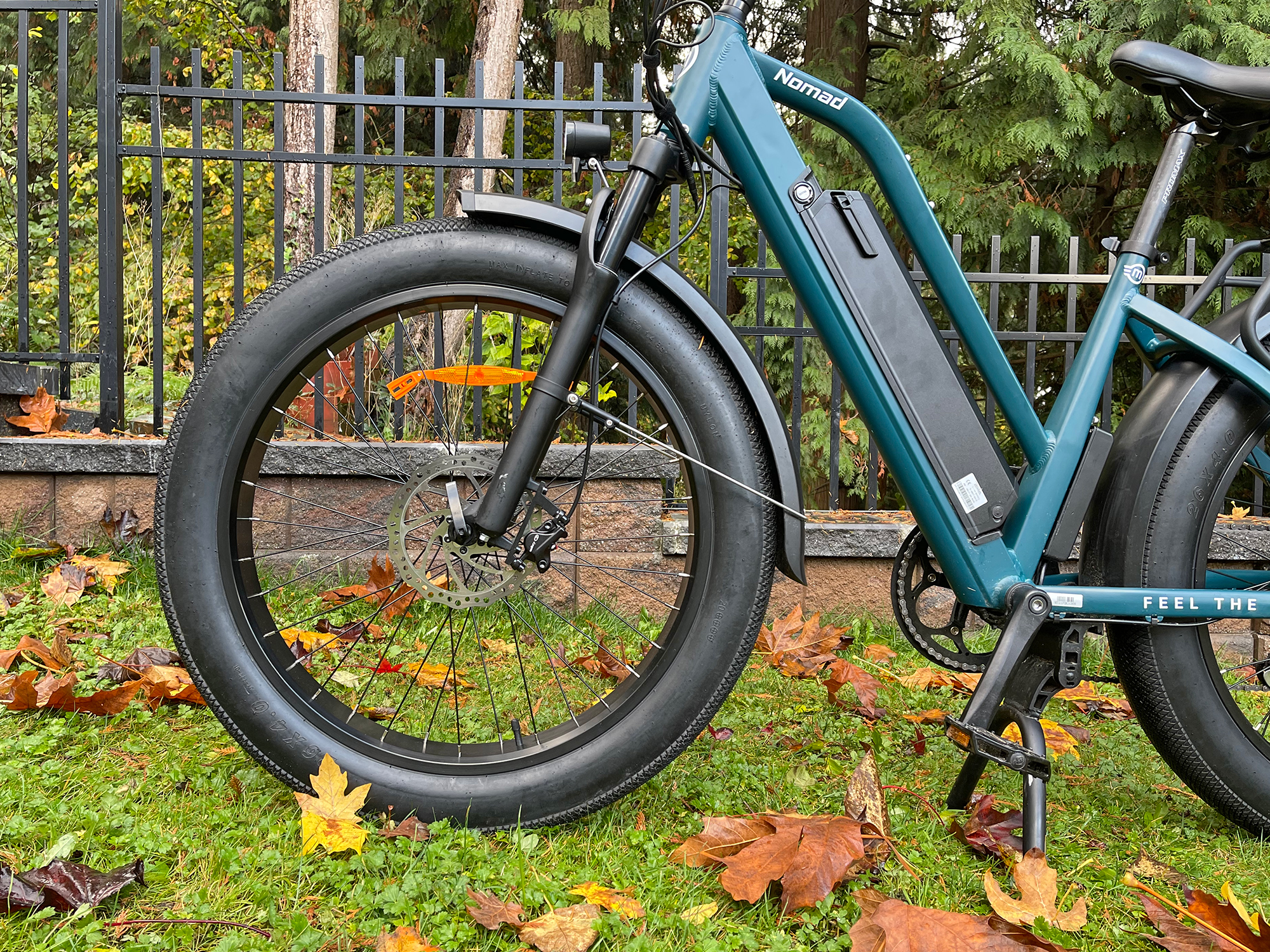
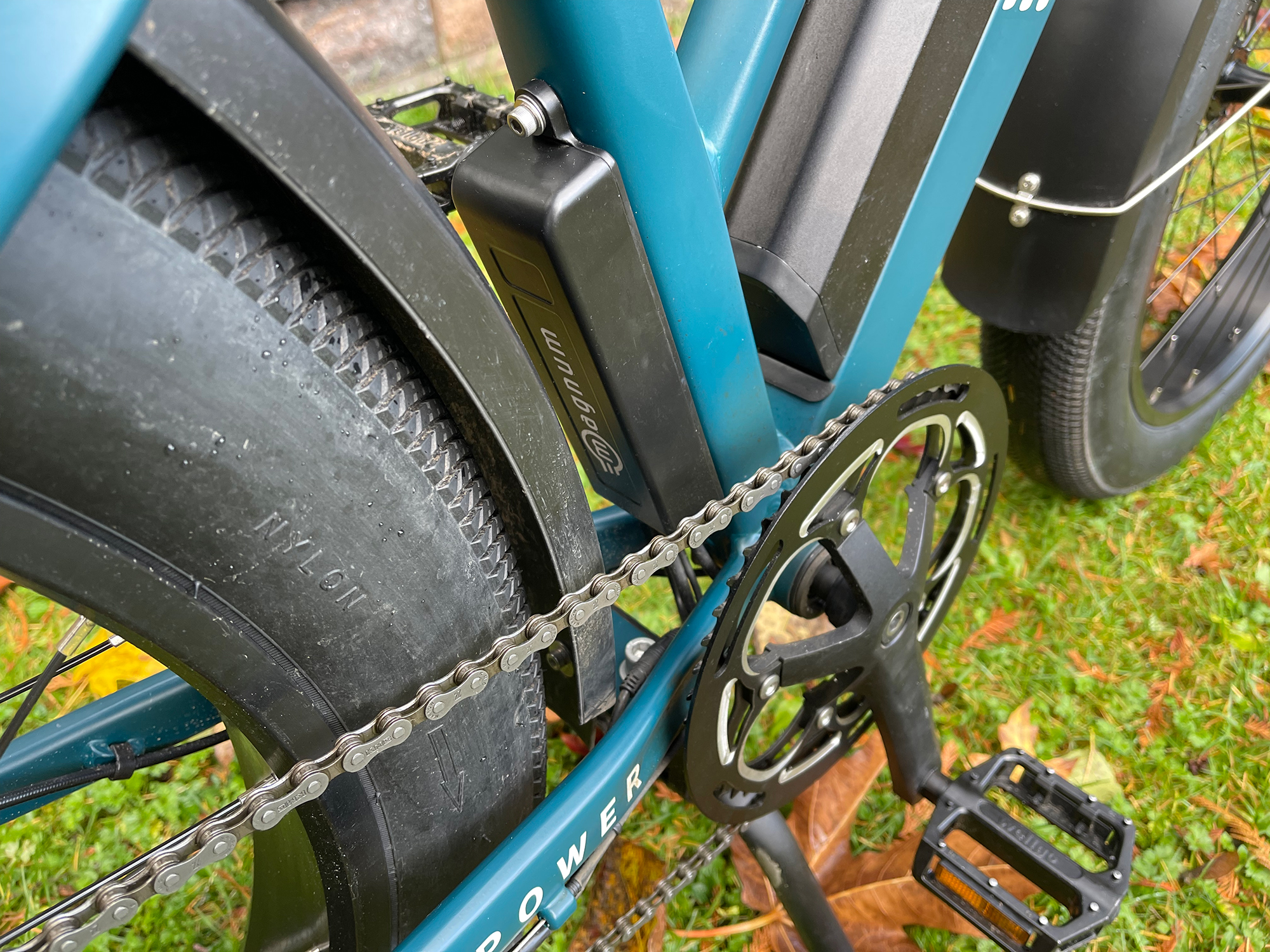
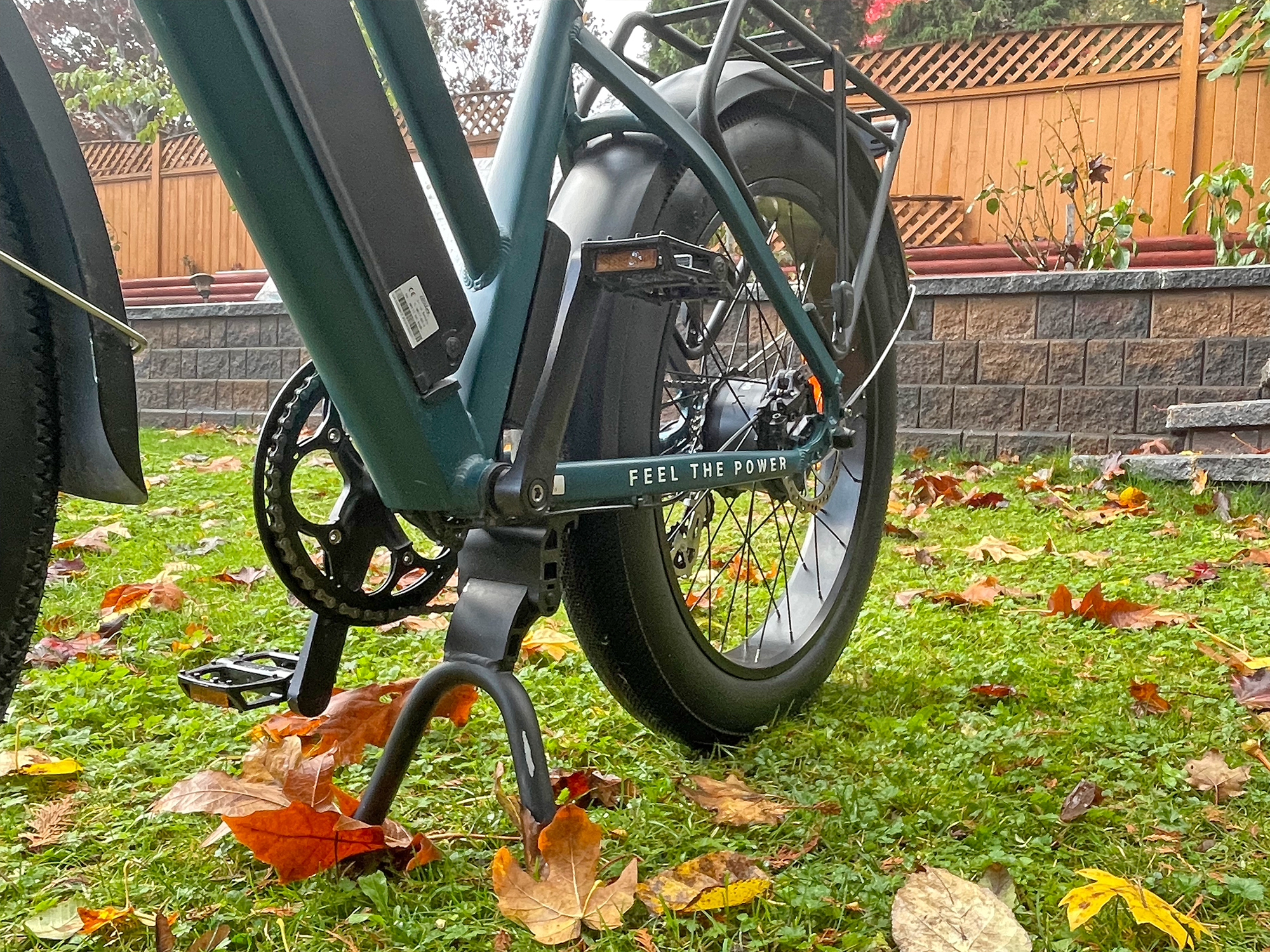
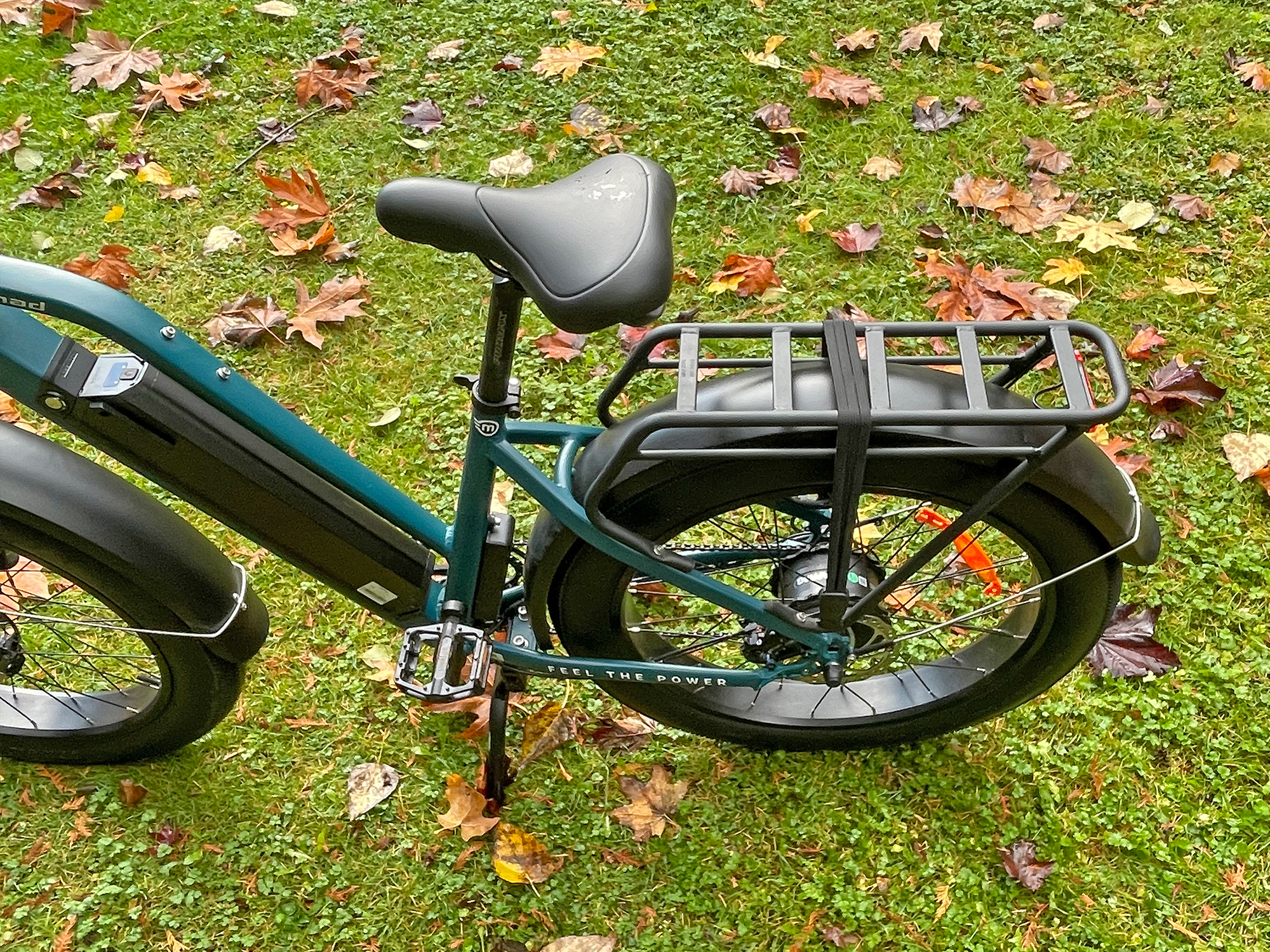
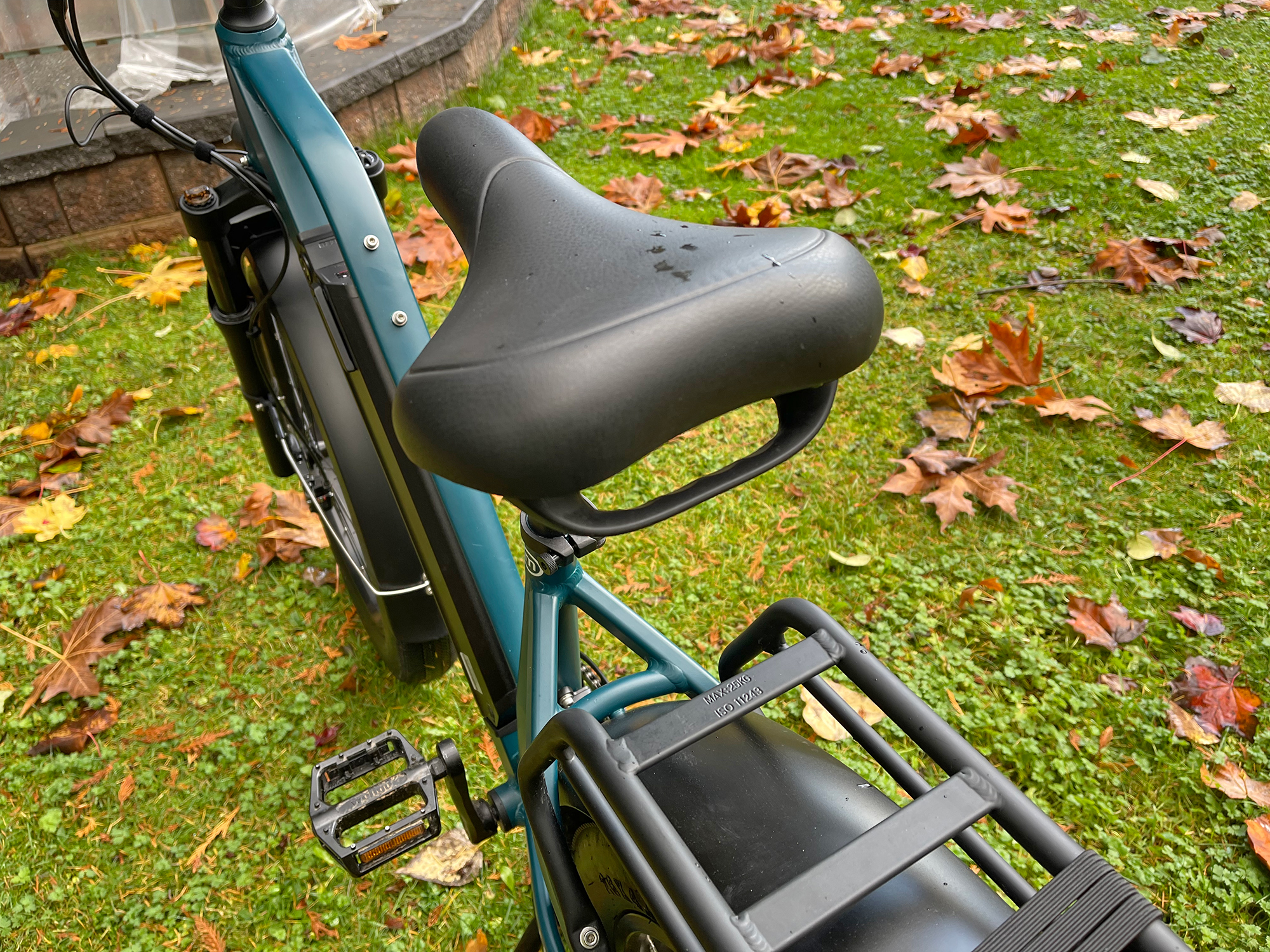
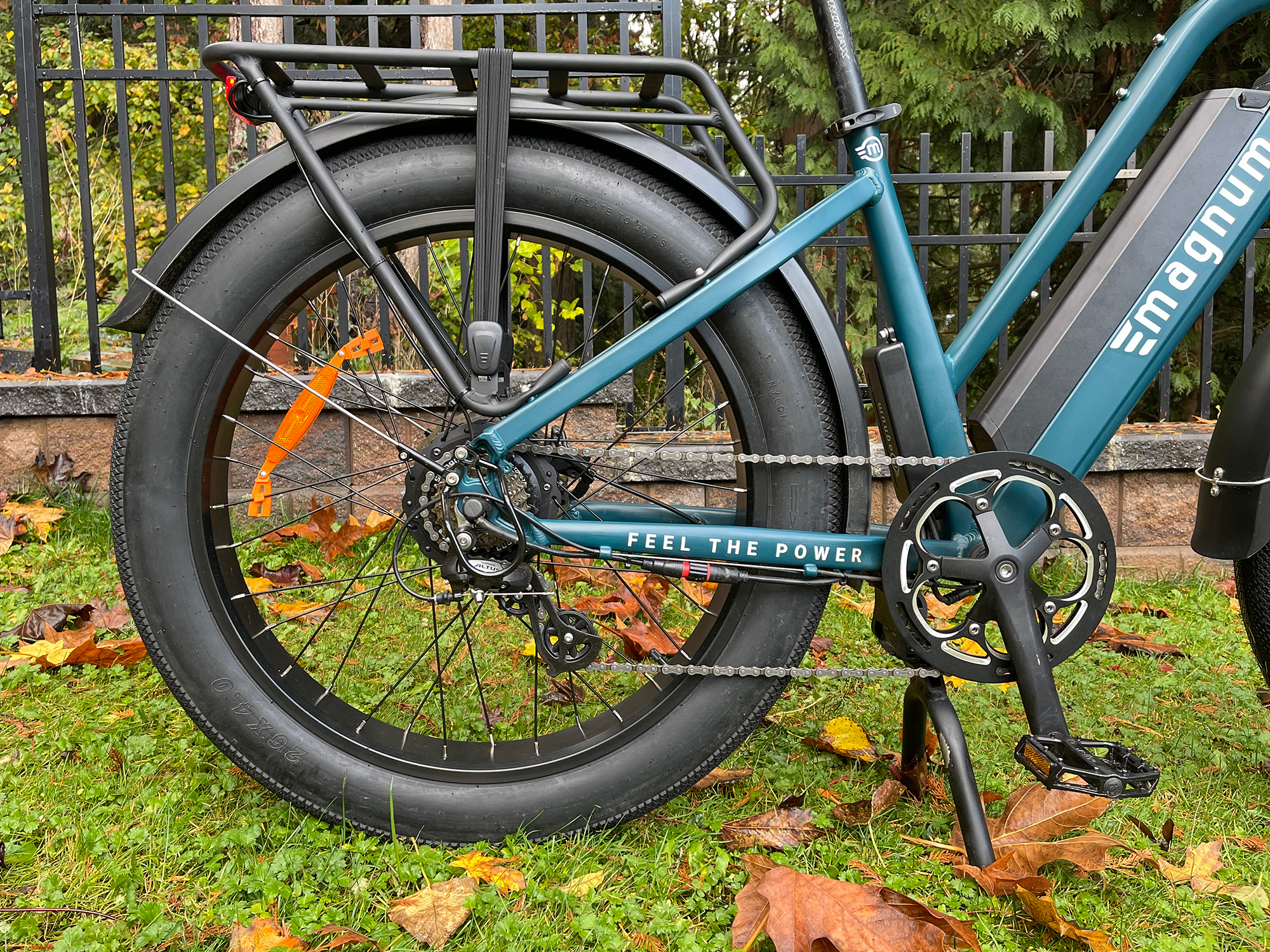
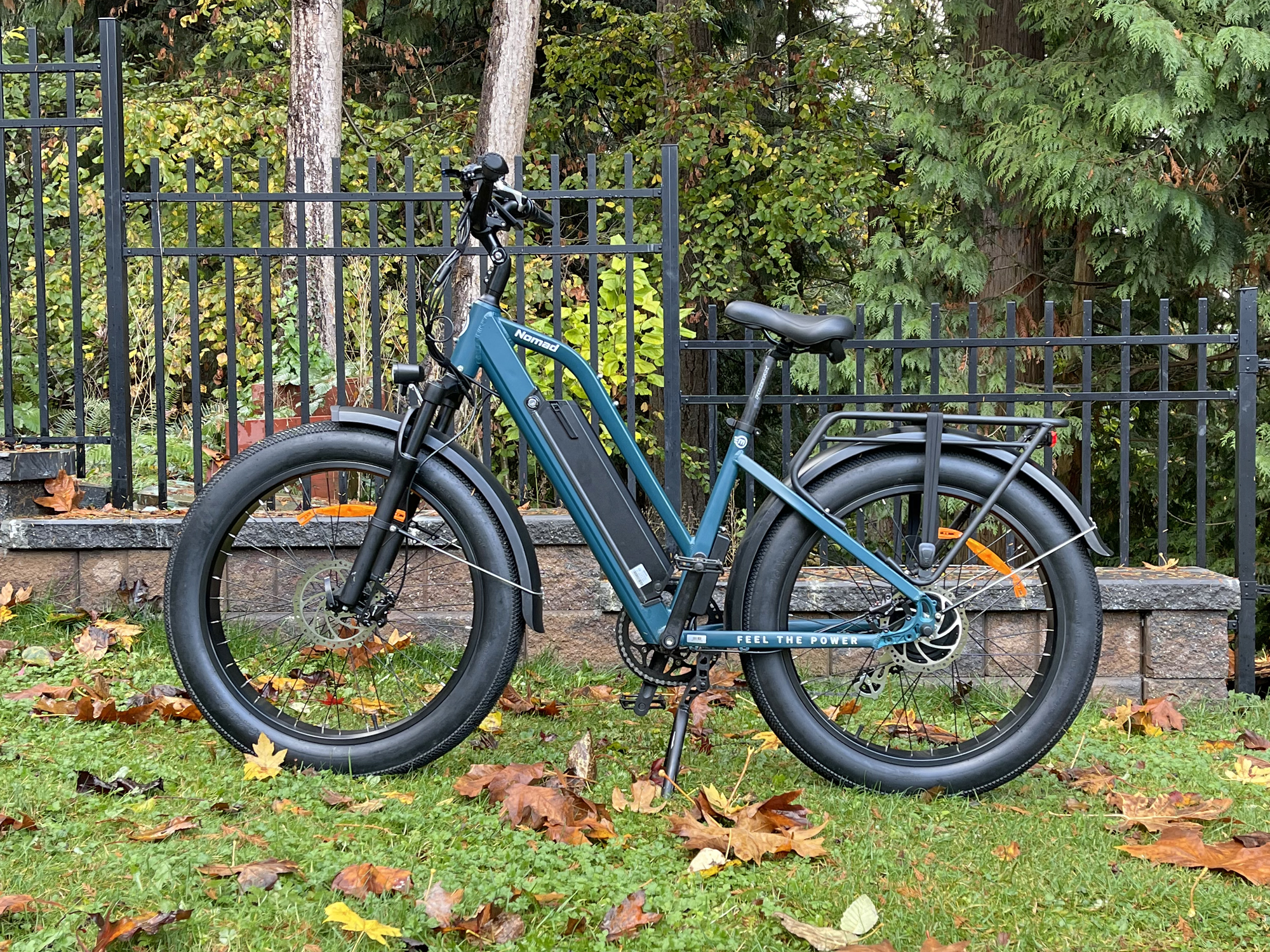
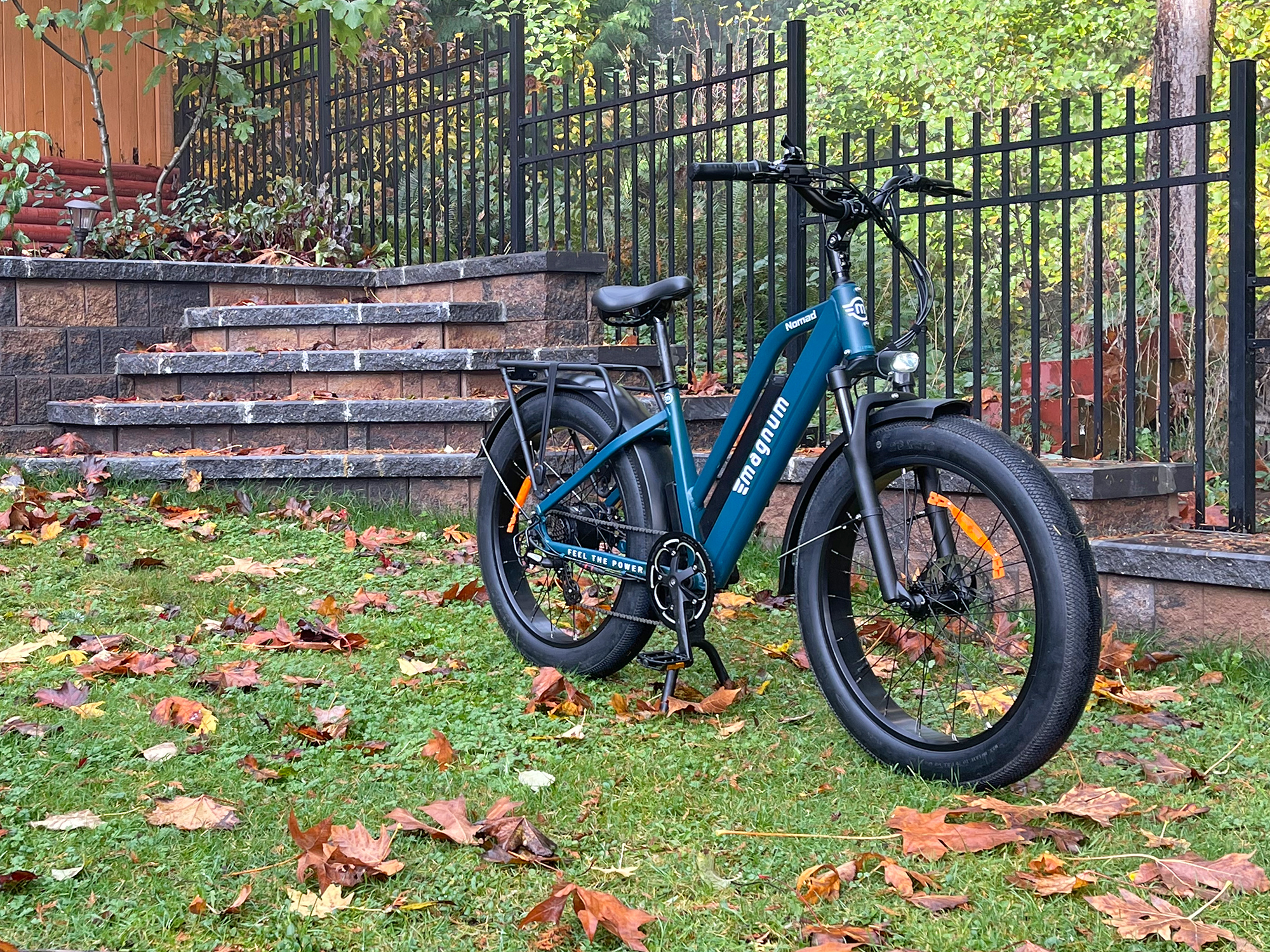
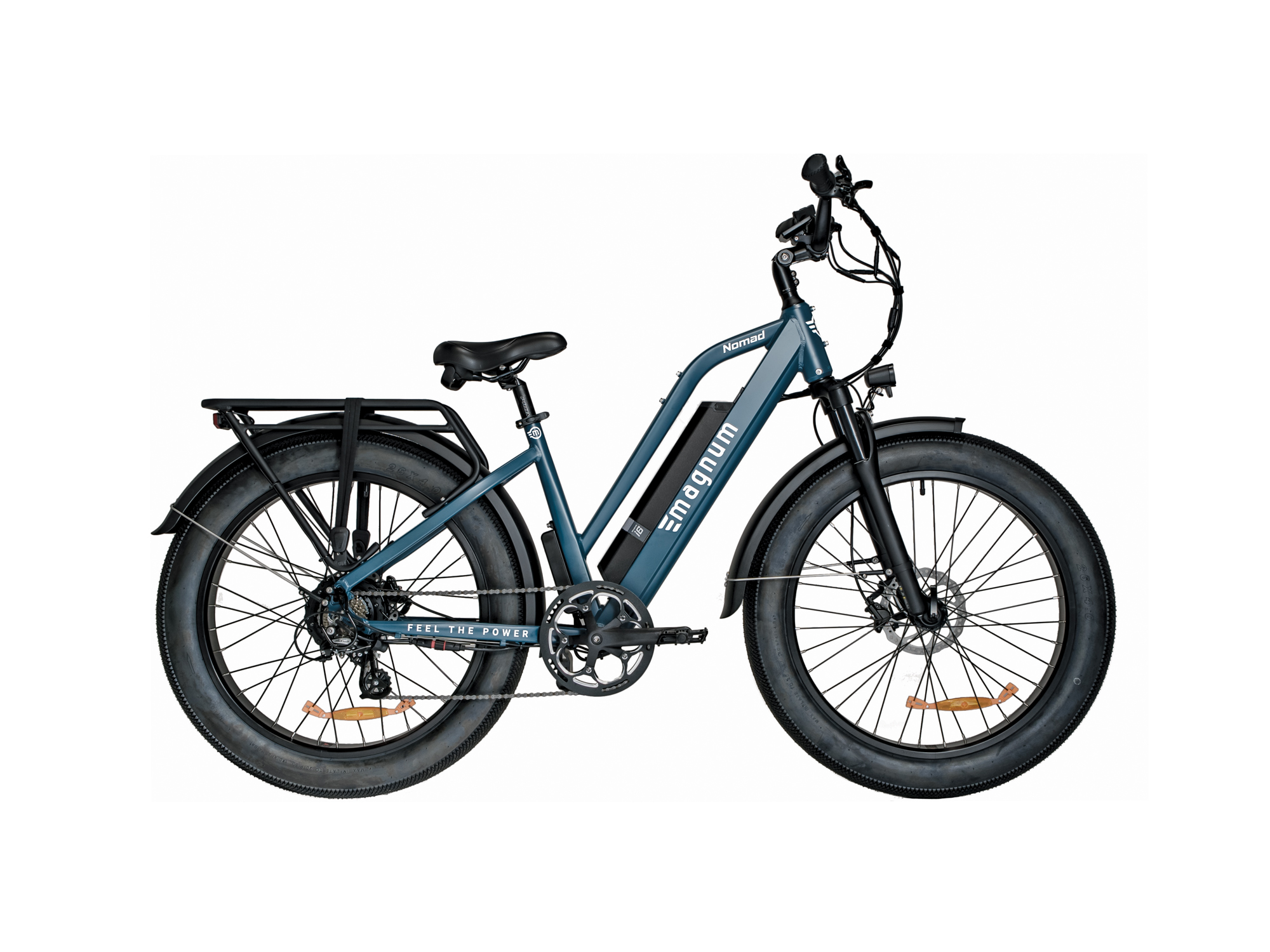
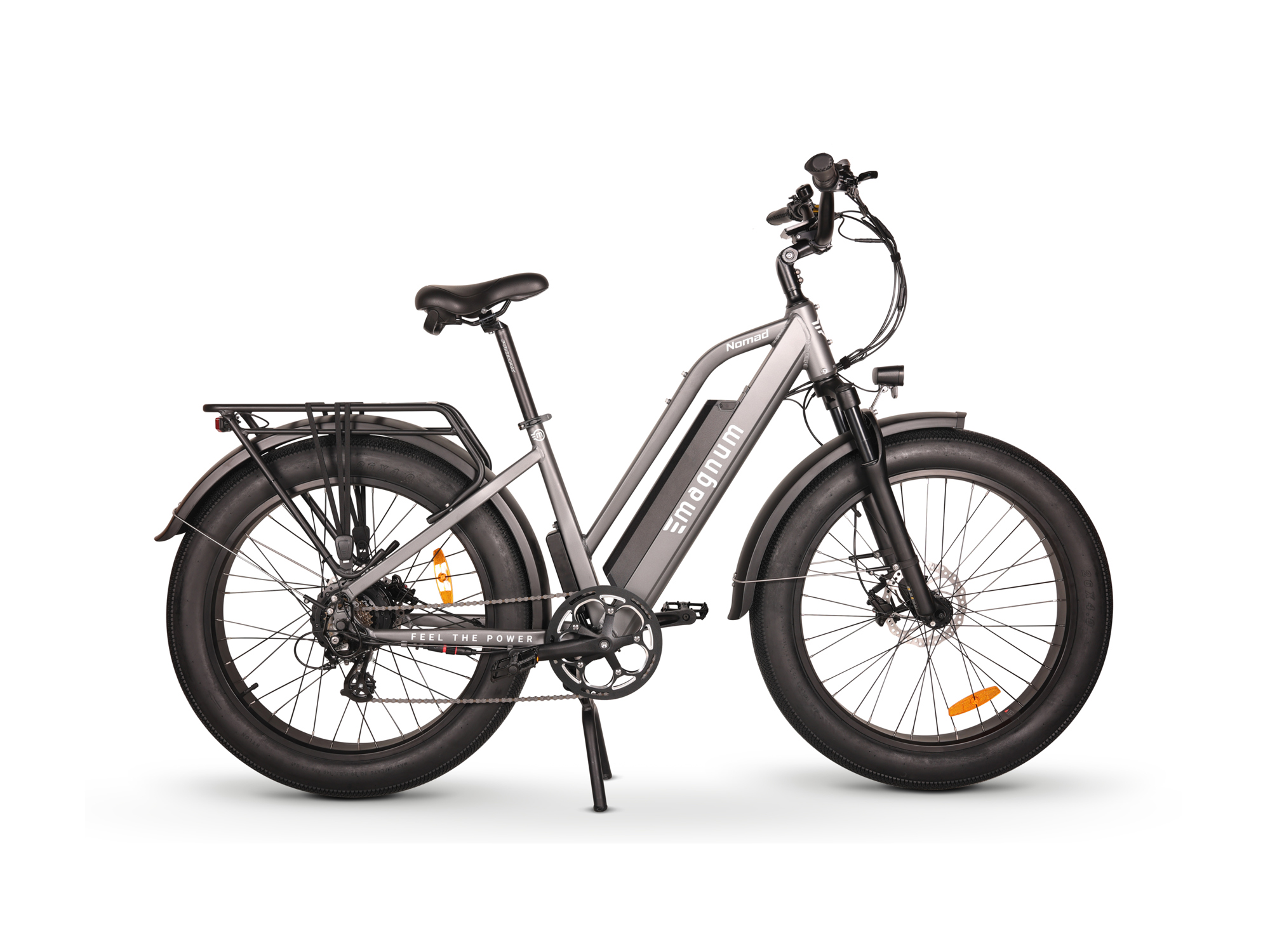

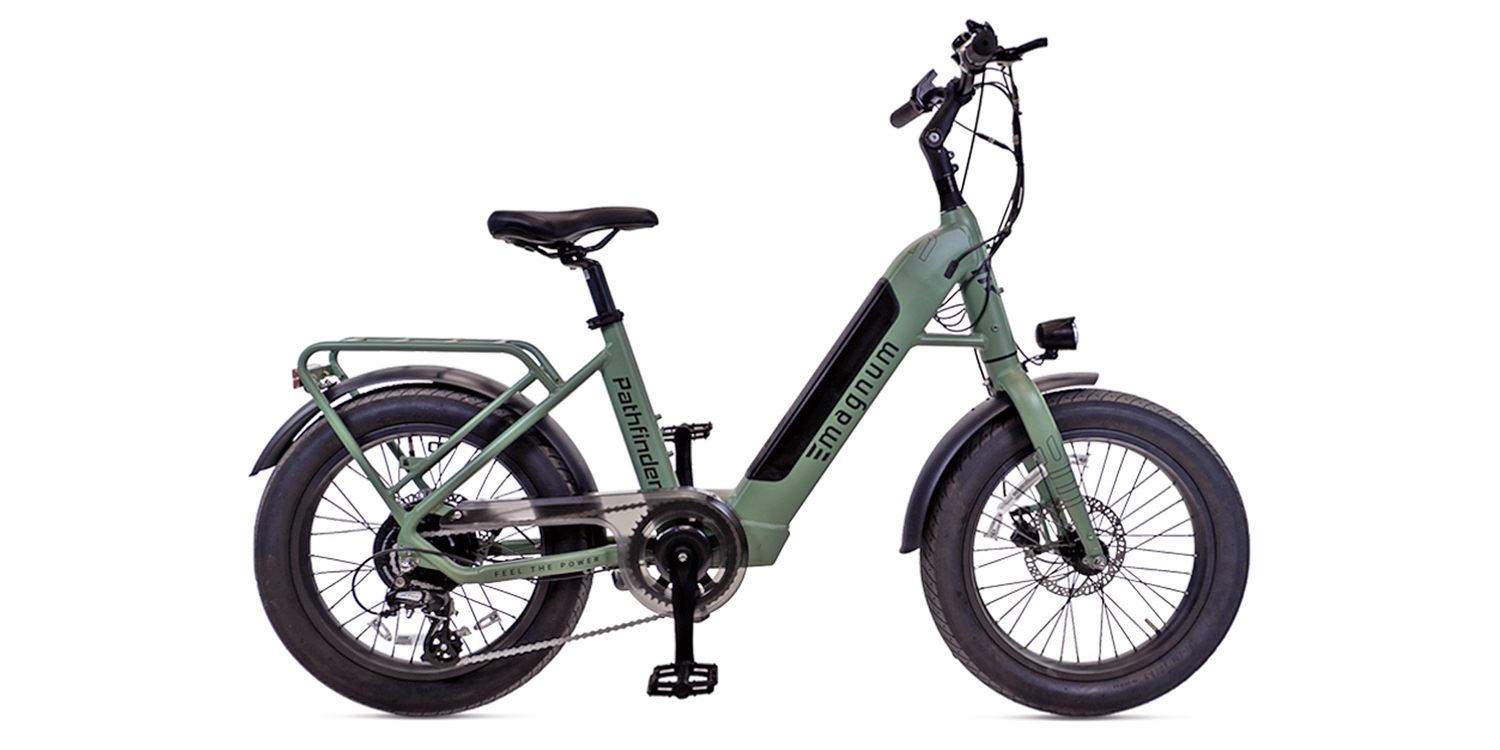
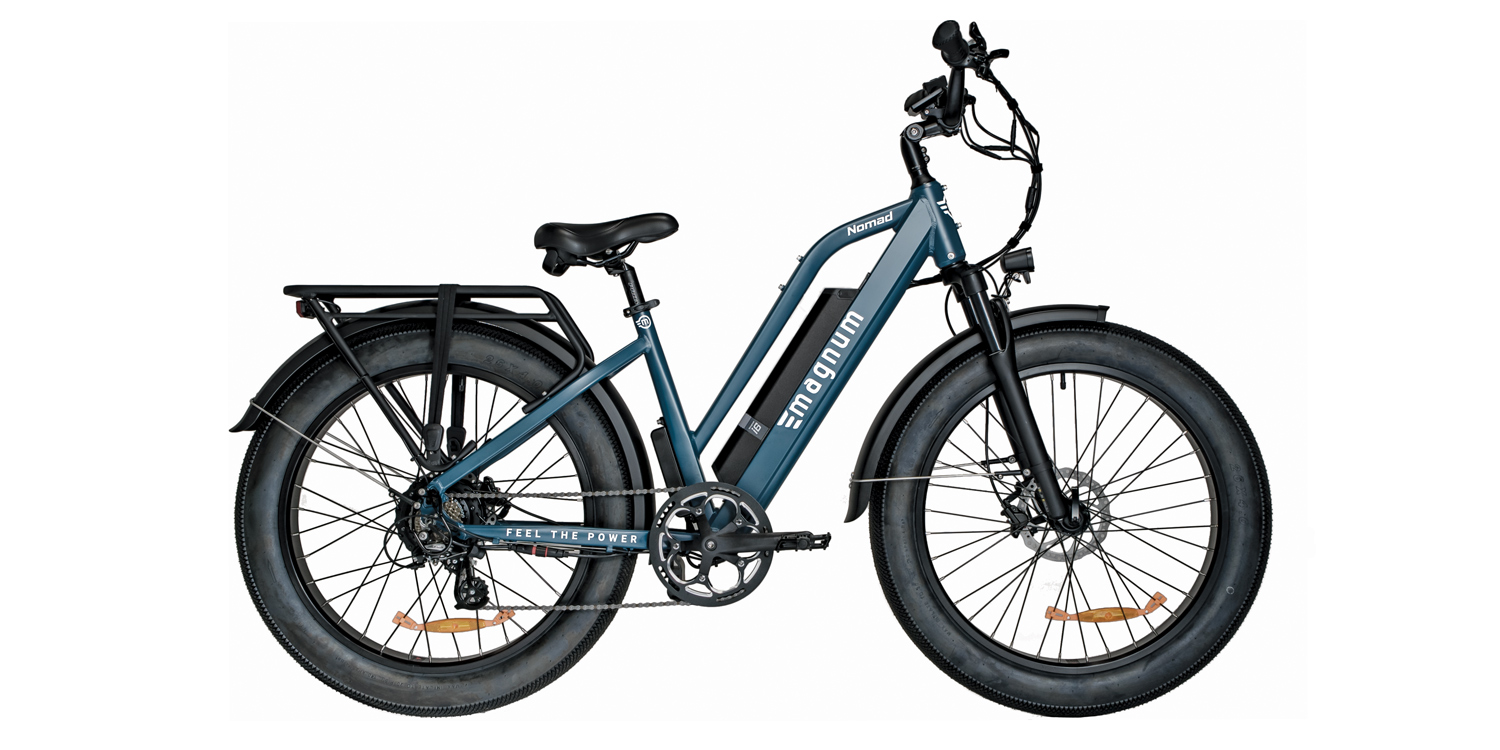
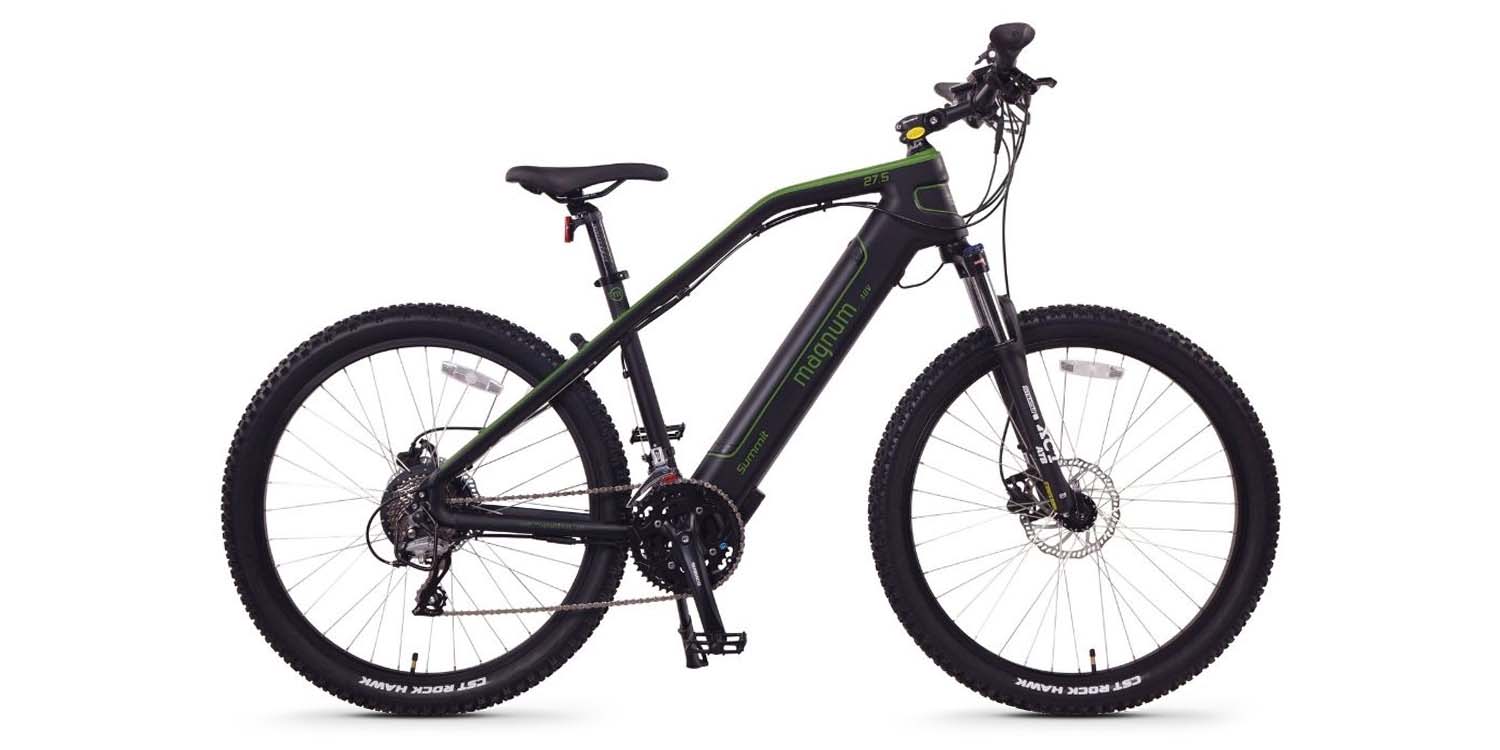
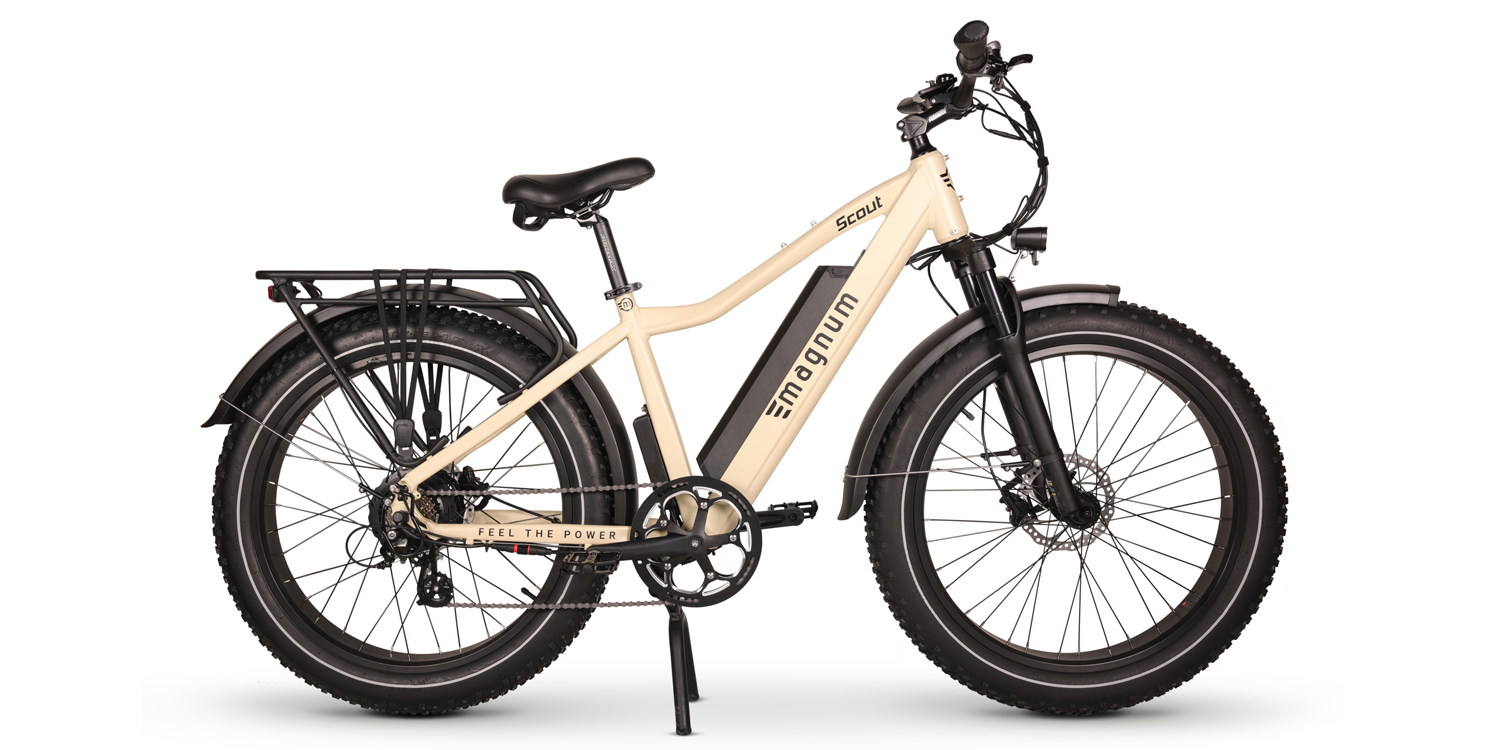
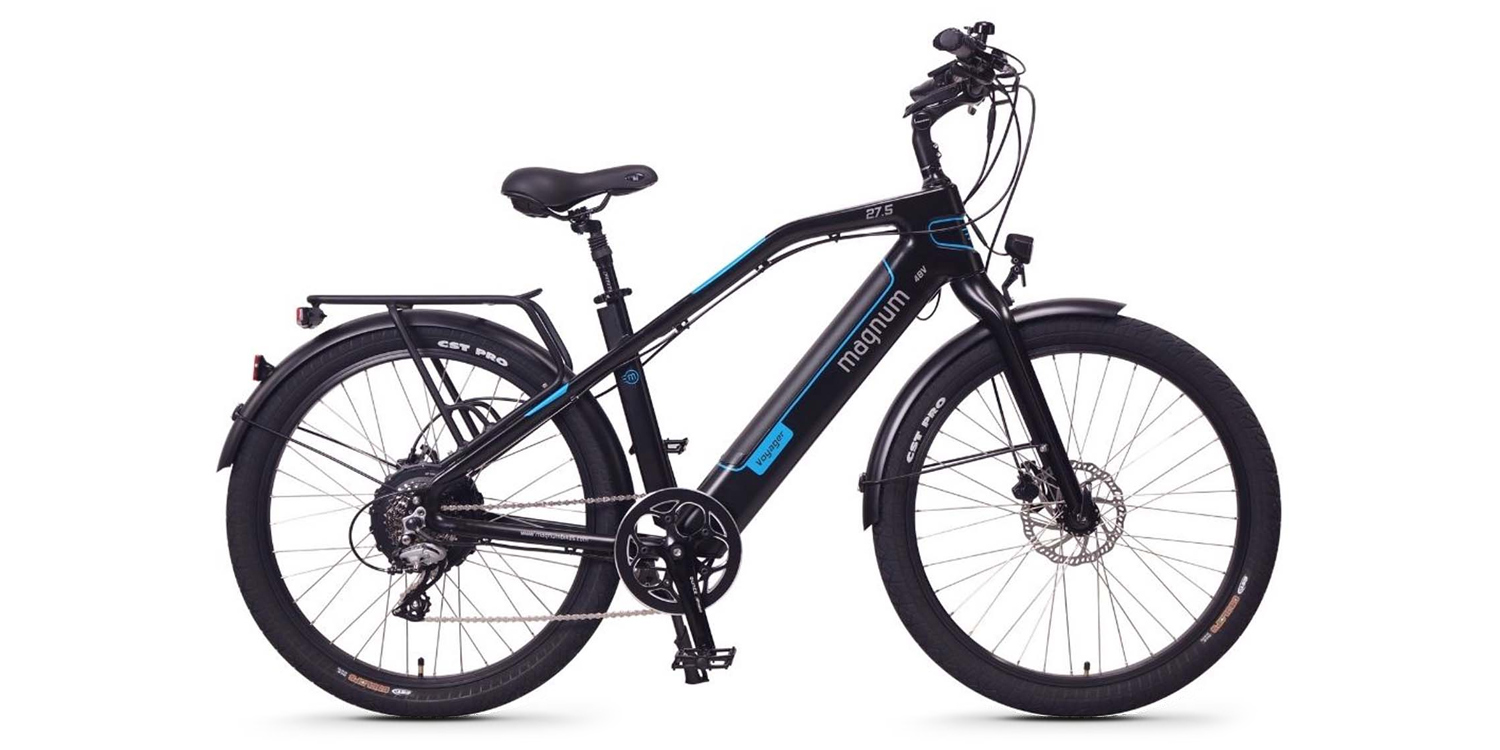
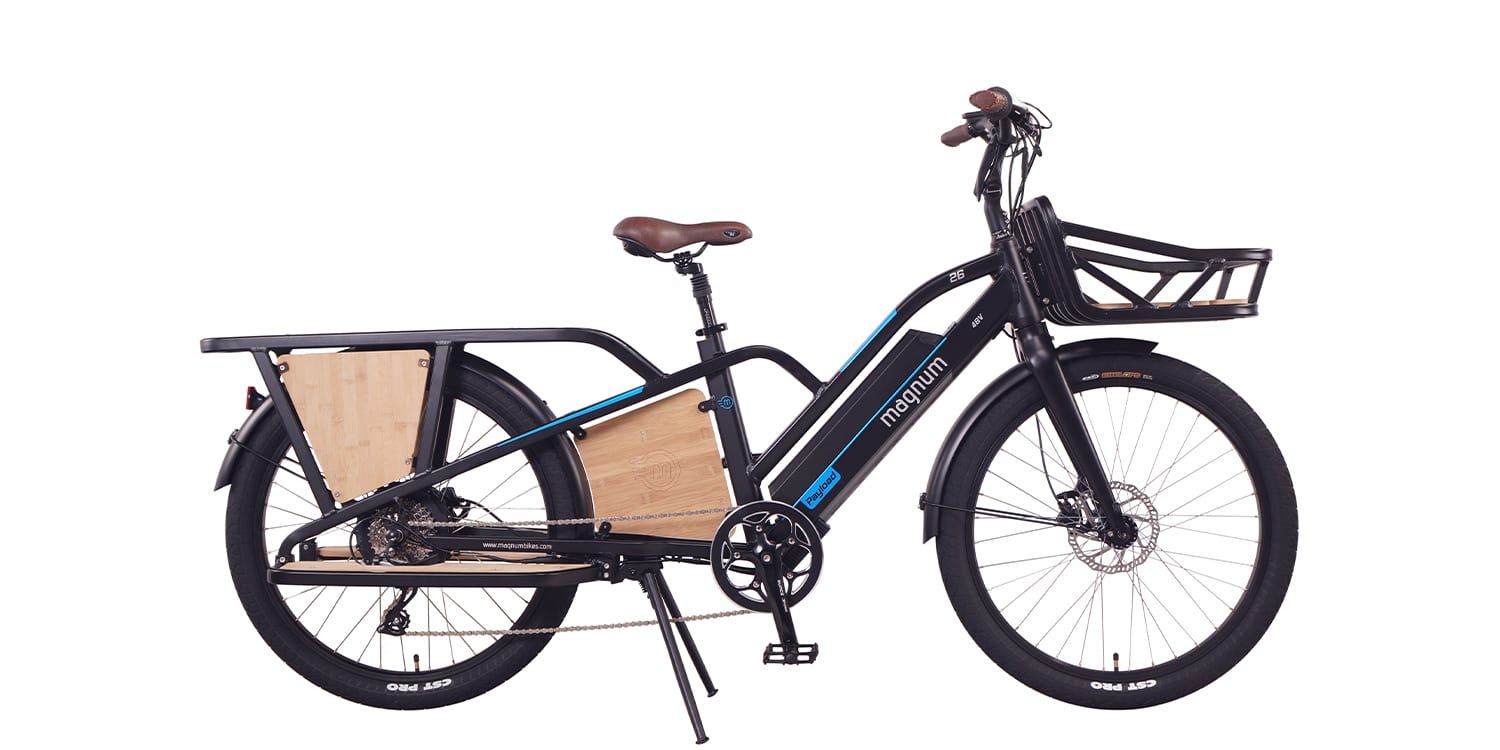
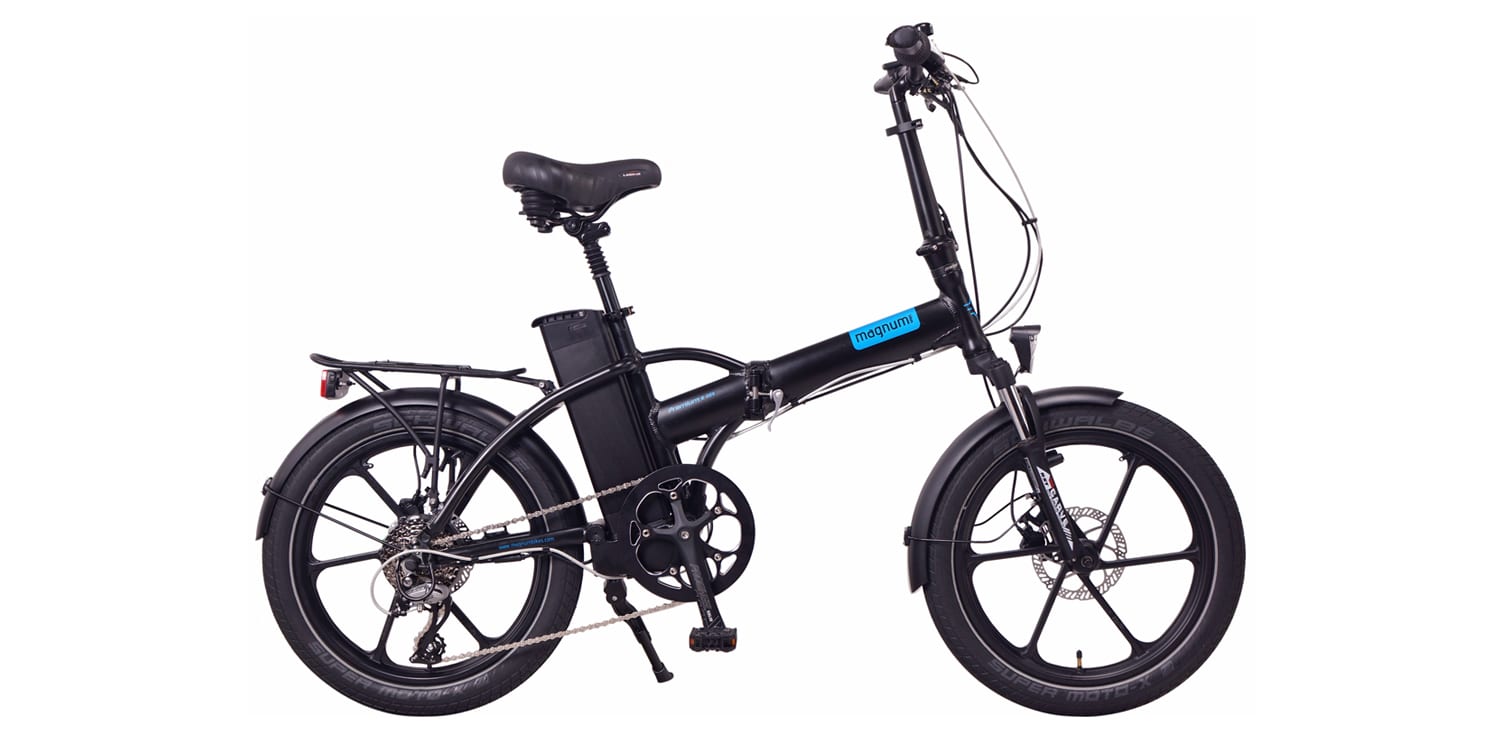
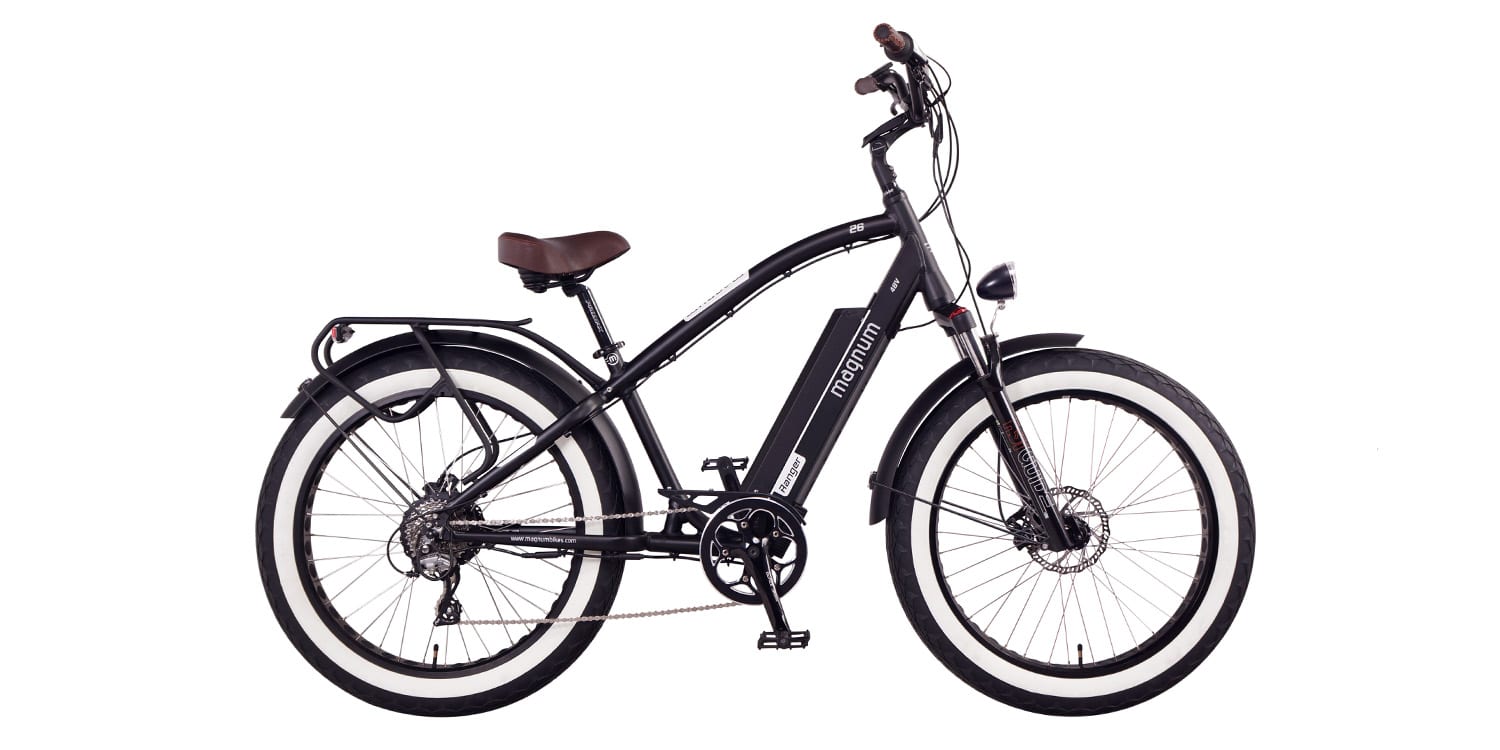
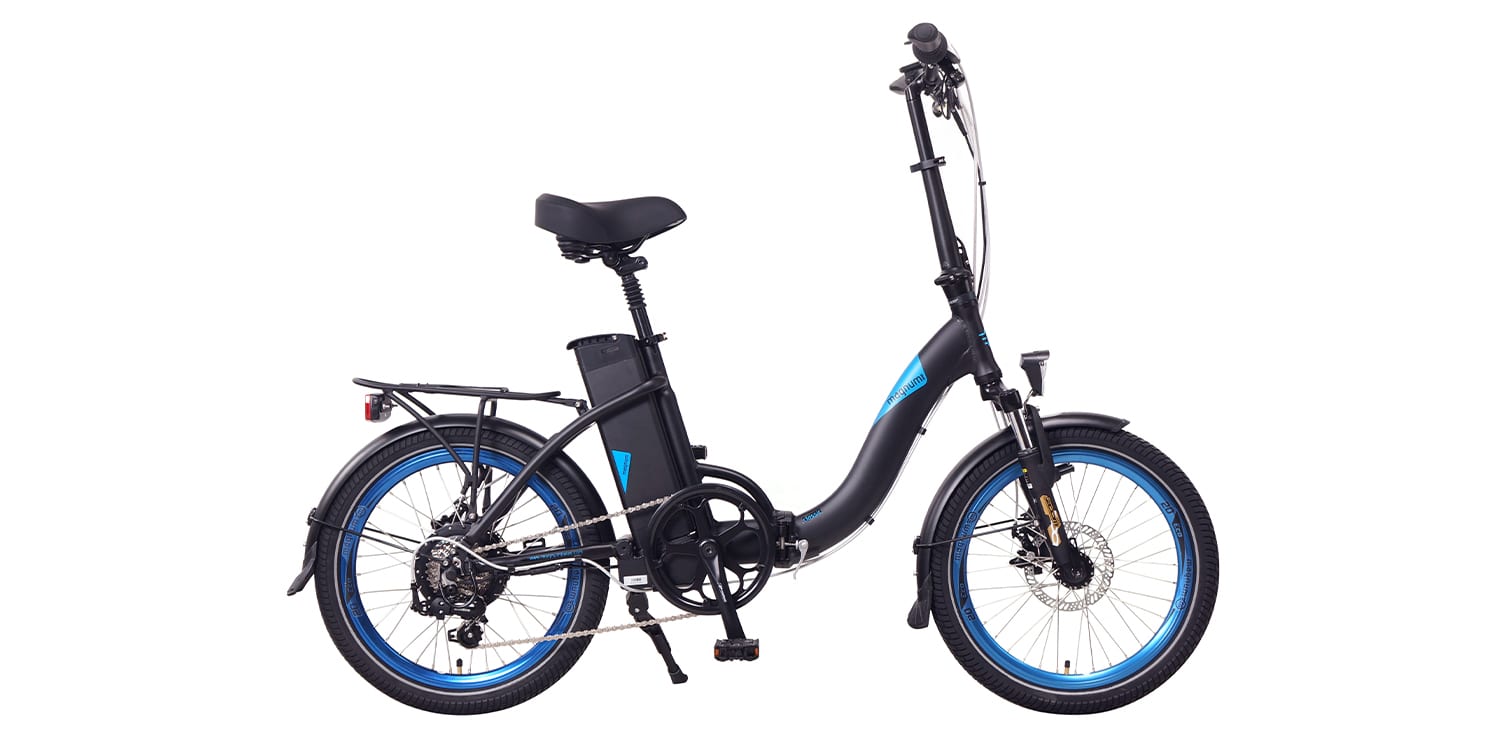
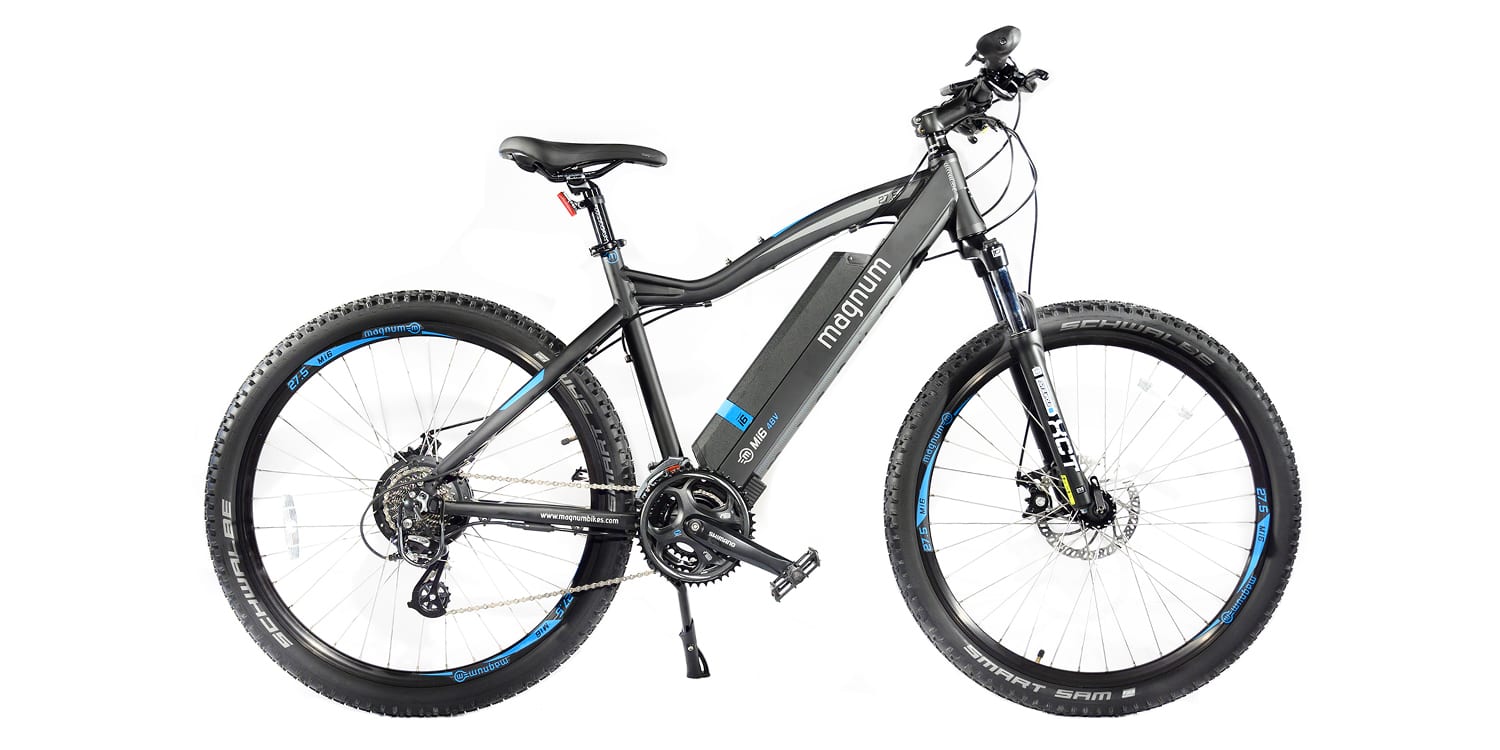
GM says
No comments yet I see. I’m considering the Magnum Nomad vs. Juiced Ripcurrent S vs. M2S ALL TERRAIN R750 HT PRO vs. Rad Rover 6 Plus. Most important considerations are hill climbing power and distance. I live in a very hilly area and I’m not a powerful rider (I’m a senior). Juiced has the best battery but I saw in the comments on that review indicated it may not be great at the hills. Overall Juiced and M2S seem to have the best overall component set. So all things being equal, I’m leaning towards the Juiced. The last consideration is that I can purchase the Magnum from a great local dealer which is worth quite a bit. Any thoughts are appreciated.
Court says
Hi GM! I’ve been covering more Magnum products over the years because they’ve been around for so long and have all of those great dealers. Juiced goes back a ways, but it seemed like there were some quality issues at one point and the company might have spun off or partnered with Radio Flyer? M2S has some really unique products, but the availability was limited at one point and it seemed like they changed designs faster. To me, it seems like a cool company, but higher involvement and more effort from a consumer if the battery needed replacement. Since I can only review so many products per year, I’ve stuck with more proven designs that I felt more people would have access to. The Magnum Nomad fits that description, and I do think it’s a solid bike. Since I haven’t seen the latest Juiced or M2S I don’t have much more to add, but you could ask around in the EBR forums!
D. Mata says
Just did a test ride today at Ride Smart Maui in Lahaina, Nate is very friendly and helpful. First, this bike is big, sturdy and impressive in looks and ride feel; I experienced some bike-lust at first sight for sure. Second, it’s one of the most comfortable bikes I have ridden. Third, it has plenty of power (I am 6′, 225 lbs), moderate hills were no problem. I was not able to reach class 3 speed of 28 on a flat surface with no wind, pedaling hard in the highest boost level (and with no ‘lock’ inhibitors at play). Maxed out around 25 mph. The main problem I experienced is the lack of higher gearing with this 7-speed combined with the cadence (as opposed to torque) sensor. You are beating eggs most of the time once it gets up to speed in the highest gear. Granted I am used to the higher quality drive train and torque sensor on my Stromer ST1. Unless you want to peddle at a very high cadence you just cannot maintain speeds above 20 MPH with the Nomad. Tire traction was a bit sketchy on semi wet roads, mostly when turning it wants to over steer a bit. This bike is a tank but it should have higher gearing and a torque sensor.
Court says
Great review! Thanks for the detailed feedback, for sharing your body stats, and also complimenting the shop in Maui! What an awesome place, I’d love to check them out if I make it to Hawaii someday :D